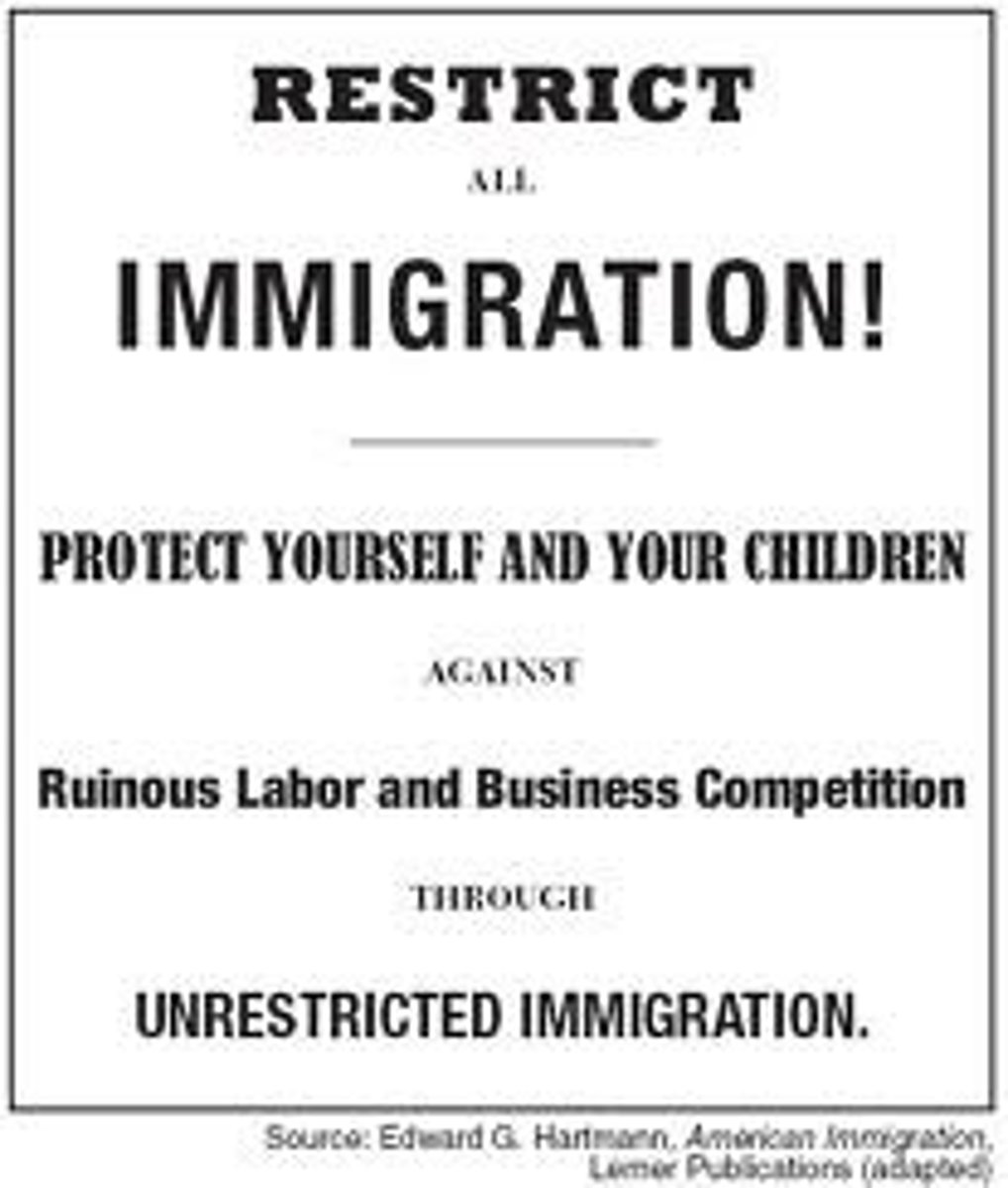Unit 3 Gradesavers
1/60
There's no tags or description
Looks like no tags are added yet.
Name | Mastery | Learn | Test | Matching | Spaced |
|---|
No study sessions yet.
61 Terms
Culture
The shared way of life of a group of people, encompassing learned features like language, beliefs, behaviors, technology, and government practices, essentially representing the total set of customs and traditions that distinguish a particular society. For example, in some cultures it is customary for a bride to wear white on her wedding day, while in other cultures, a bride wears red.
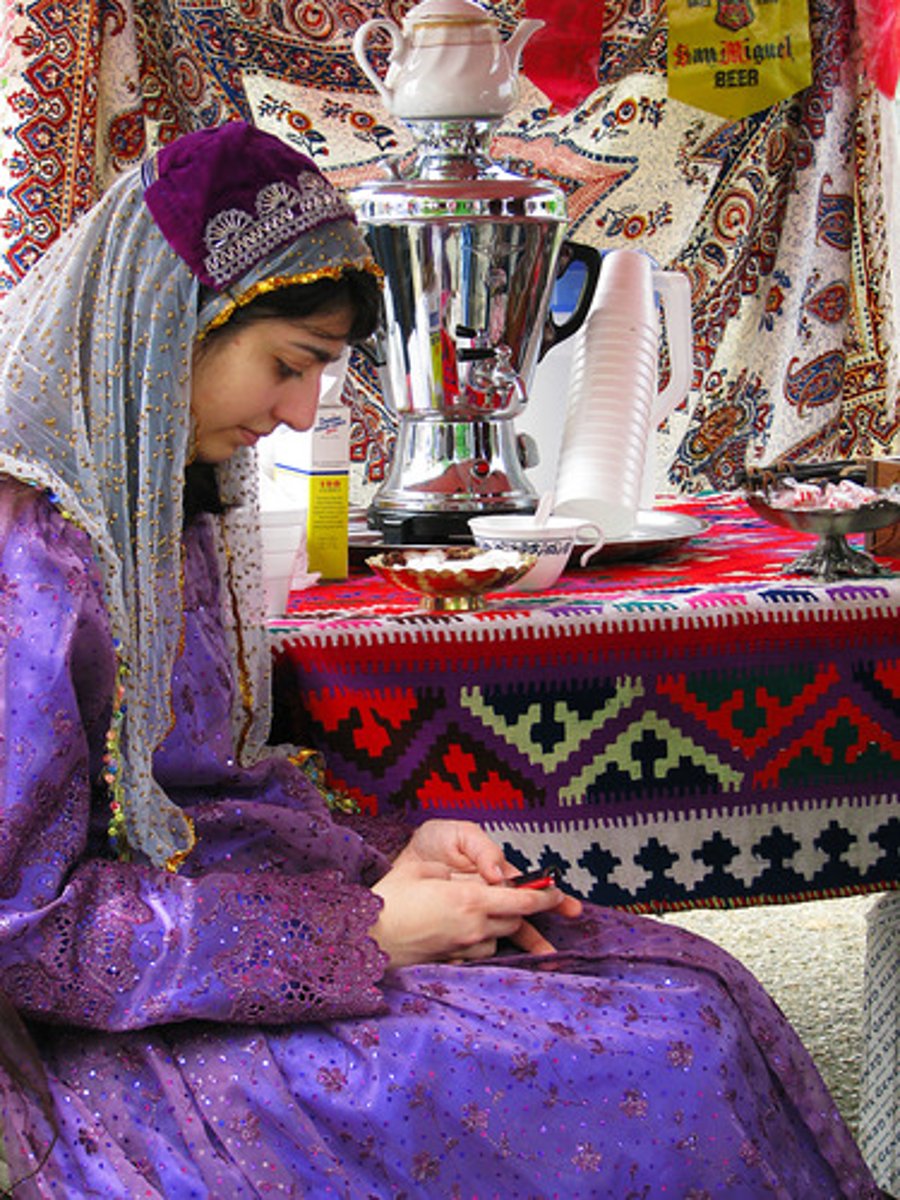
Cultural Traits
Refers to a single, identifiable element within a culture, whether it be a material object, a belief, a practice, or a social custom, that is considered part of the everyday life of a particular group of people; essentially, it's a specific characteristic that contributes to the overall identity of a culture, like language, religion, cuisine, or clothing style.
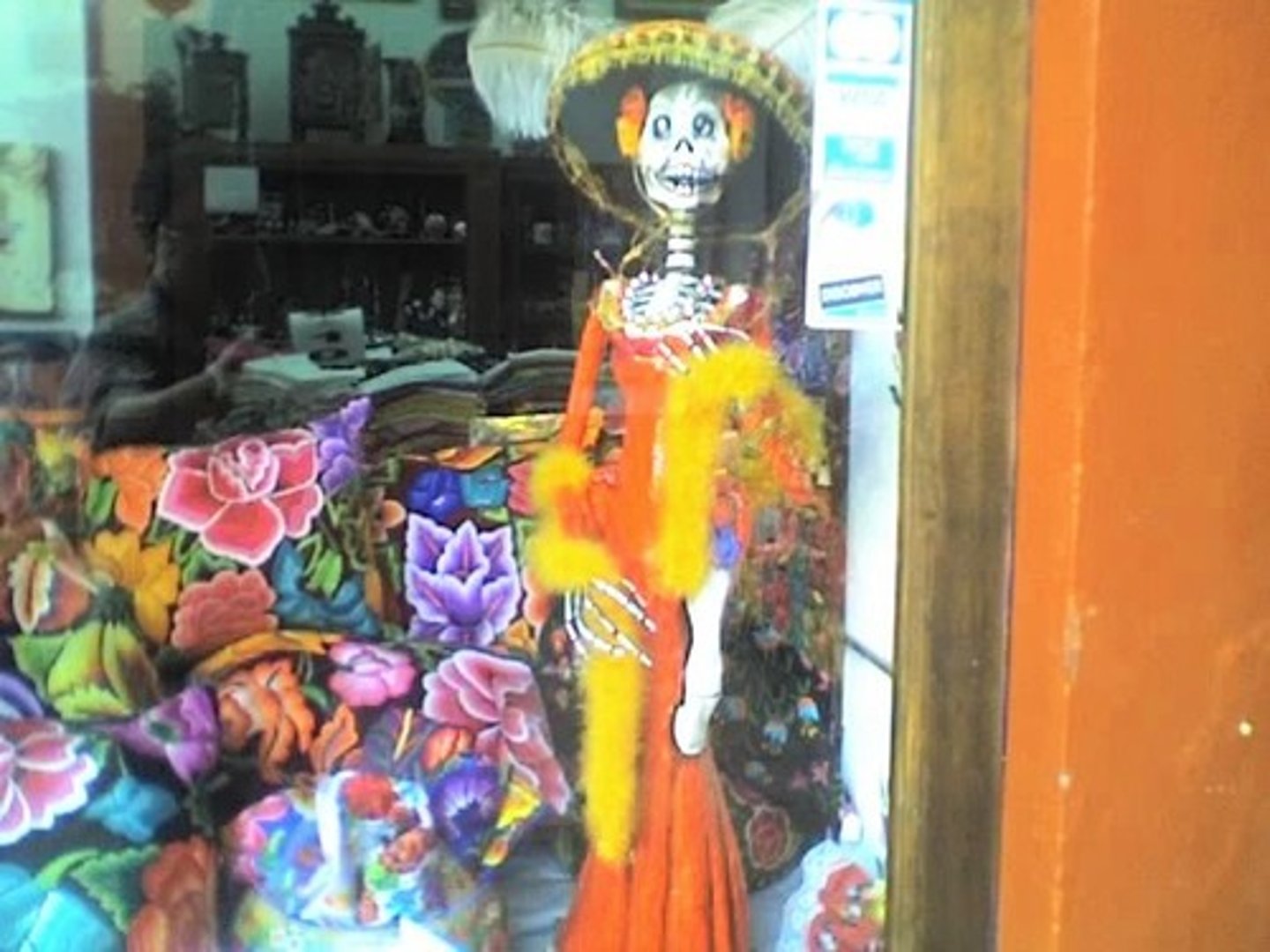
Cultural Complex
When a trait combines with others in a distinctive way a culture complex is formed. This includes common values, beliefs, behaviors and artifacts that make a group in an area distinct from others. For example, the "American Barbecue" culture, which includes a set of interrelated traits like specific types of smoked meats, regional variations in cooking techniques, social gatherings around grilling, and the associated traditions and values around sharing food with community.
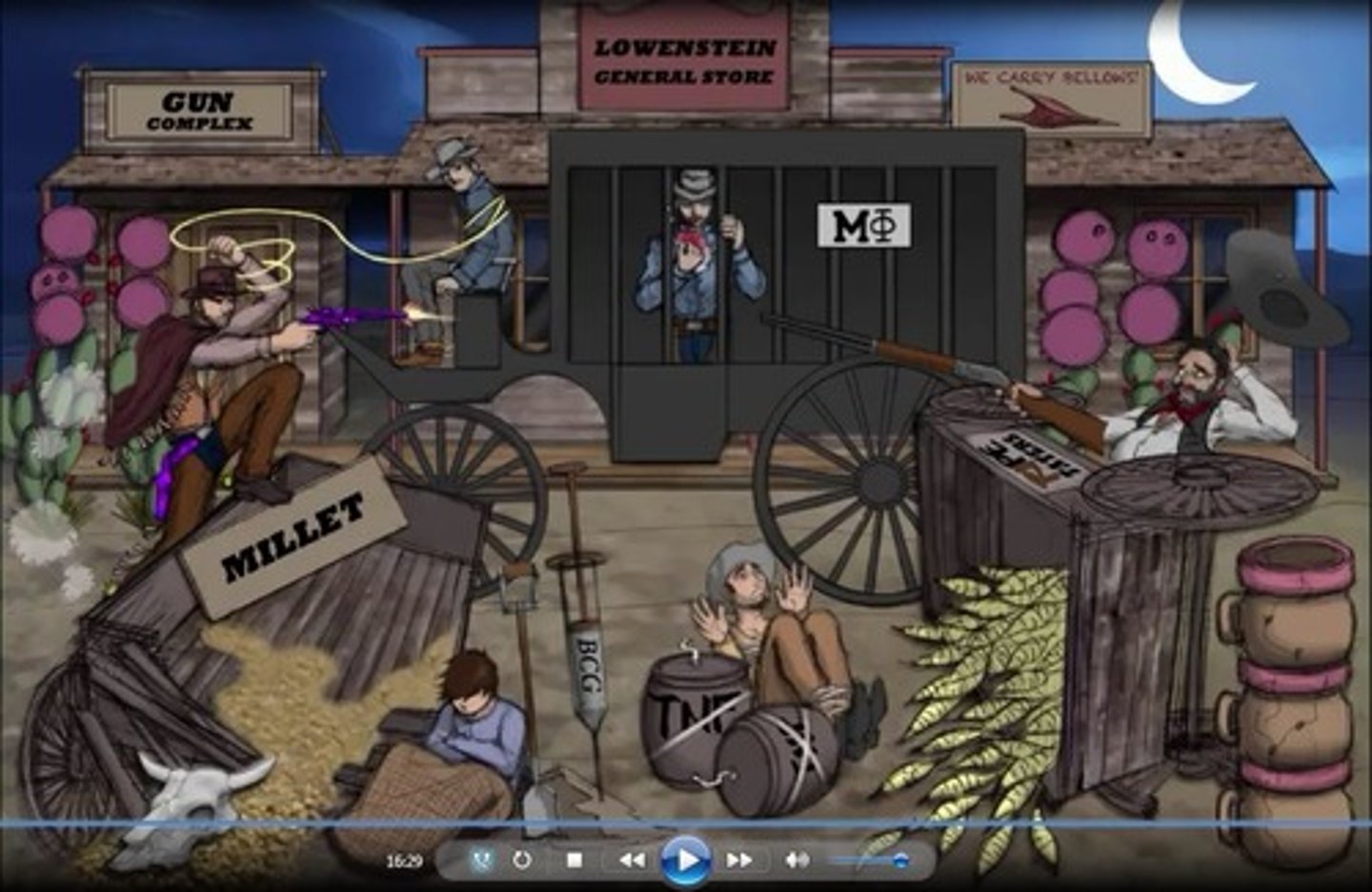
Cultural Hearth
Refers to a geographic region where a distinct culture originated and from which cultural traits, like language, religion, technology, and social practices, spread to surrounding areas through diffusion; essentially, it's the birthplace of a particular culture. For example, the Mesopotamia region in the Middle East; this area is considered a cultural hearth because it was the origin of many early innovations like writing, agriculture, and organized societies, which then spread to other regions through cultural diffusion.
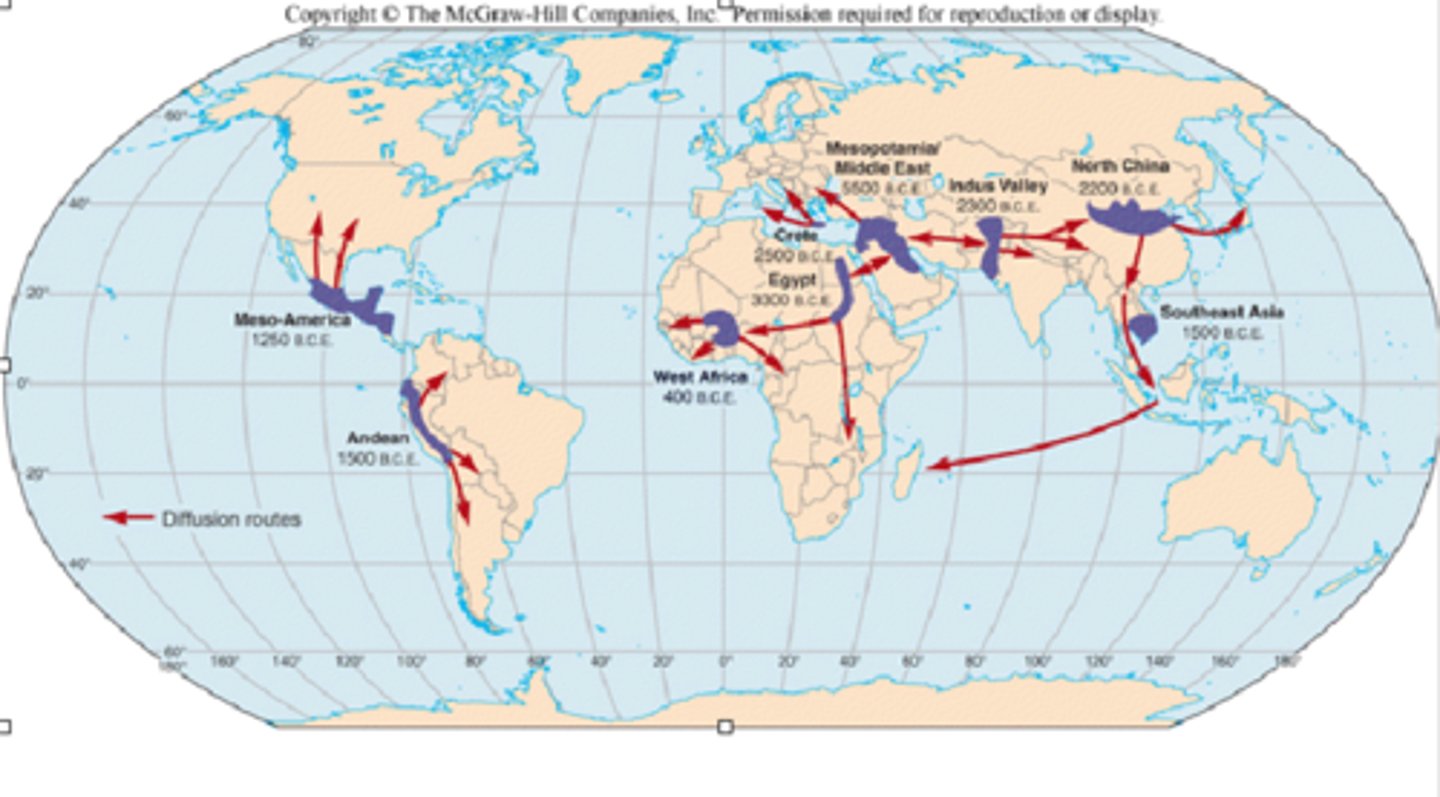
Taboos
Refers to a social or cultural restriction on a specific behavior, practice, or discussion that is considered inappropriate or unacceptable within a particular society, often stemming from deeply held beliefs or customs; essentially, something that is "off-limits" due to societal norms. For example, Islam and Judaism prohibit the consumption of pork.

Folk Culture
Refers to the cultural practices of small, homogeneous groups living in isolated rural areas, often characterized by unique traditions, customs, and material culture that are passed down through generations, usually with a strong connection to the local environment and a distinct origin hearth, diffusing primarily through relocation diffusion. For example, the Amish community in the United States; their traditional lifestyle, clothing, and practices are deeply rooted in their cultural heritage and are largely isolated from mainstream popular culture, demonstrating the localized nature of folk culture.

Popular Culture
Refers to a set of practices, beliefs, and objects that are widely shared across a large geographic area, often rapidly changing and heavily influenced by mass media, including things like music, movies, fashion trends, and food that are easily accessible to a large portion of the population; essentially, the dominant cultural trends within a society at a given time. For example, widespread consumption of American fast food like McDonald's hamburgers, as it is readily available across many parts of the world and reflects a globally recognized cultural phenomenon.
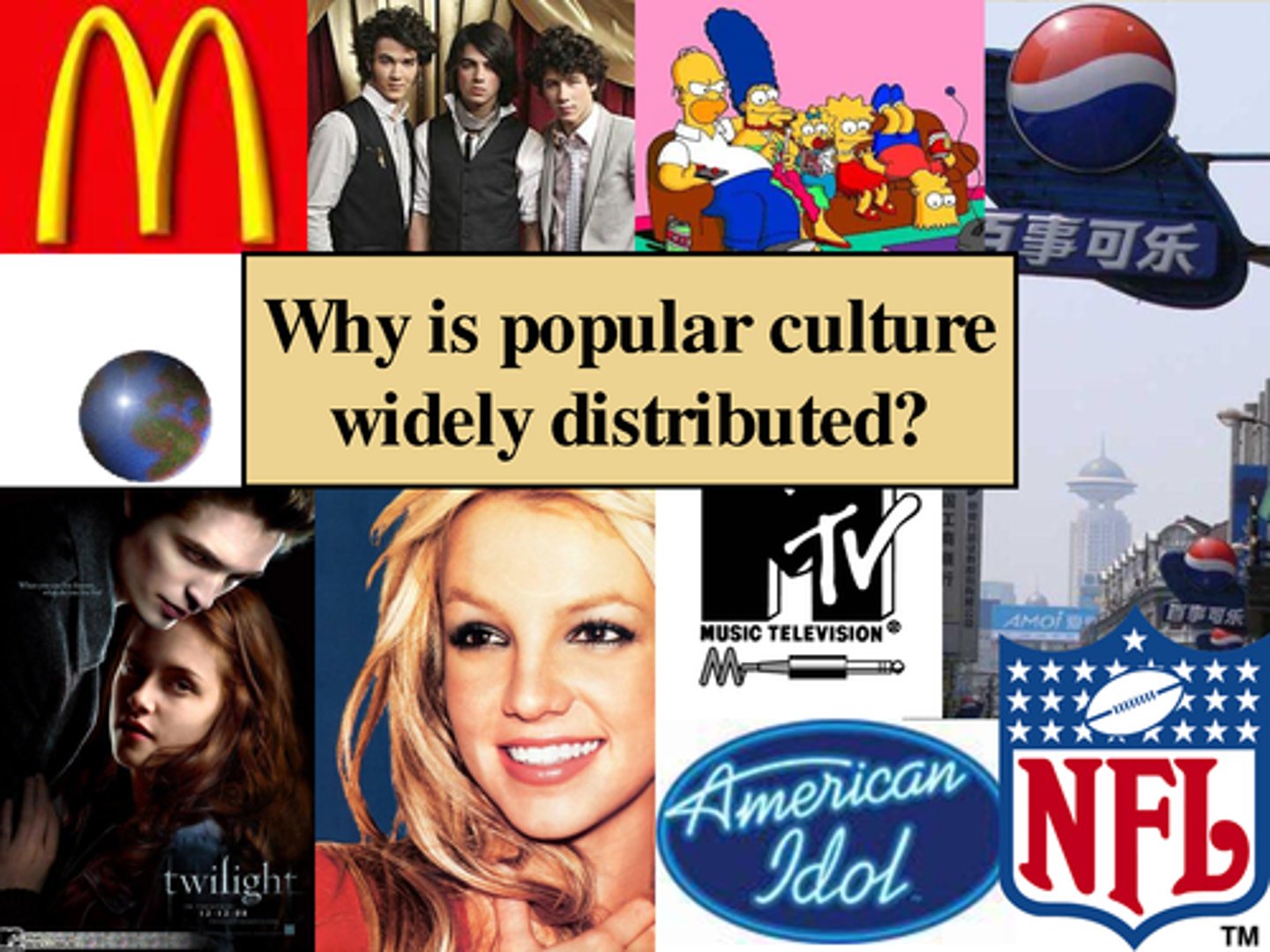
Global Culture
Refers to cultural practices and norms that transcend national boundaries and are shared widely across the world, often including elements like popular media, consumerism, and lifestyle trends that are recognized and participated in by people from diverse regions globally. For example, Social media platforms: Connecting people across borders and facilitating the spread of trends and Hollywood movies: Widely watched and understood in various parts of the world.
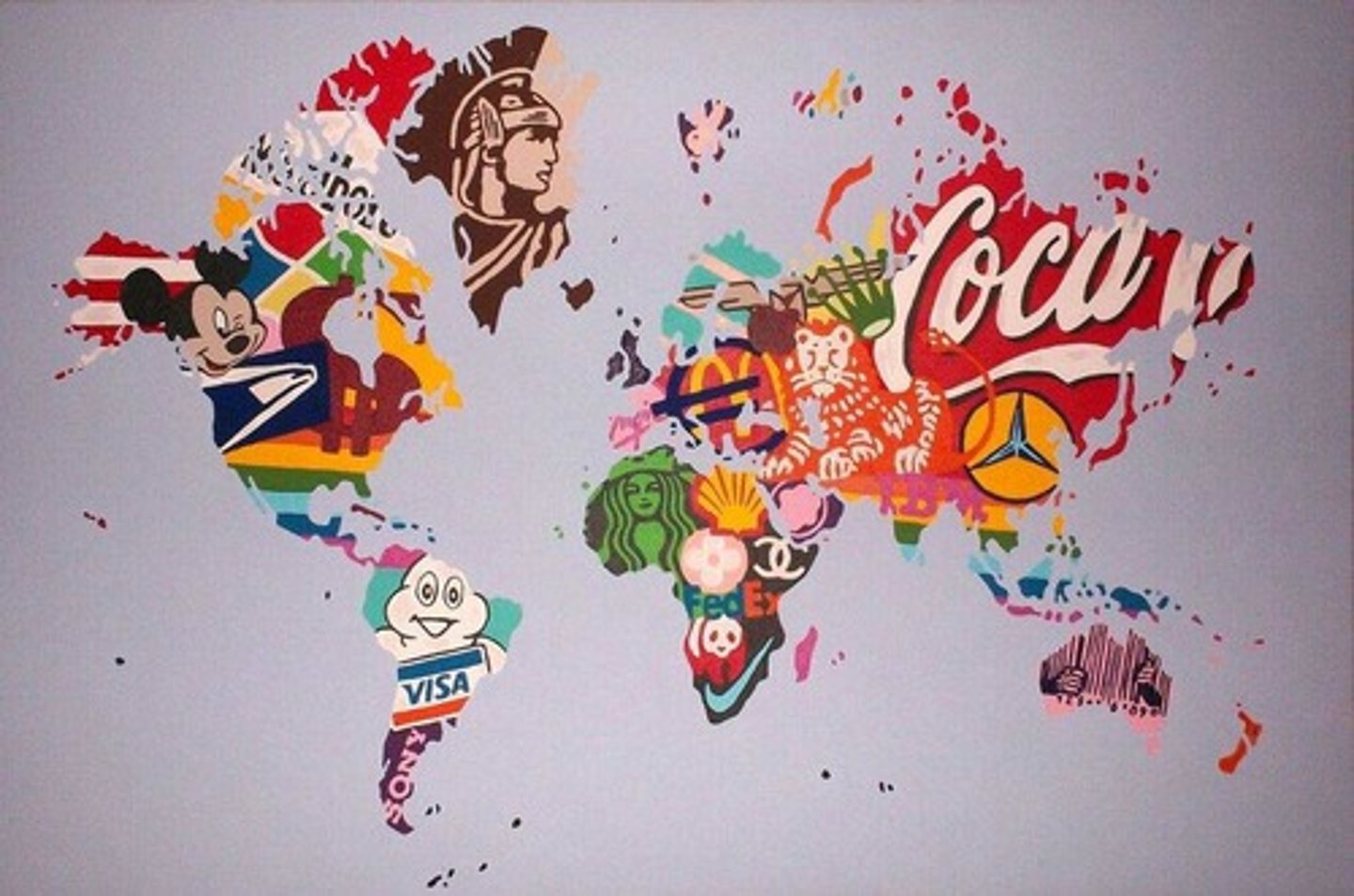
Indigenous Community
Refers to a group of people who are the original inhabitants of a specific geographic region, maintaining distinct cultural practices, languages, and traditions that predate colonization or significant outside influence, essentially living in their ancestral homeland with a historical continuity to pre-colonial societies. For example, the Native American tribes of the United States, such as the Lakota, Navajo, or Cherokee, who are considered indigenous to the land they inhabit prior to European colonization; other examples include the Maori of New Zealand, the Sami people of Northern Europe, or the Aboriginal Australians.
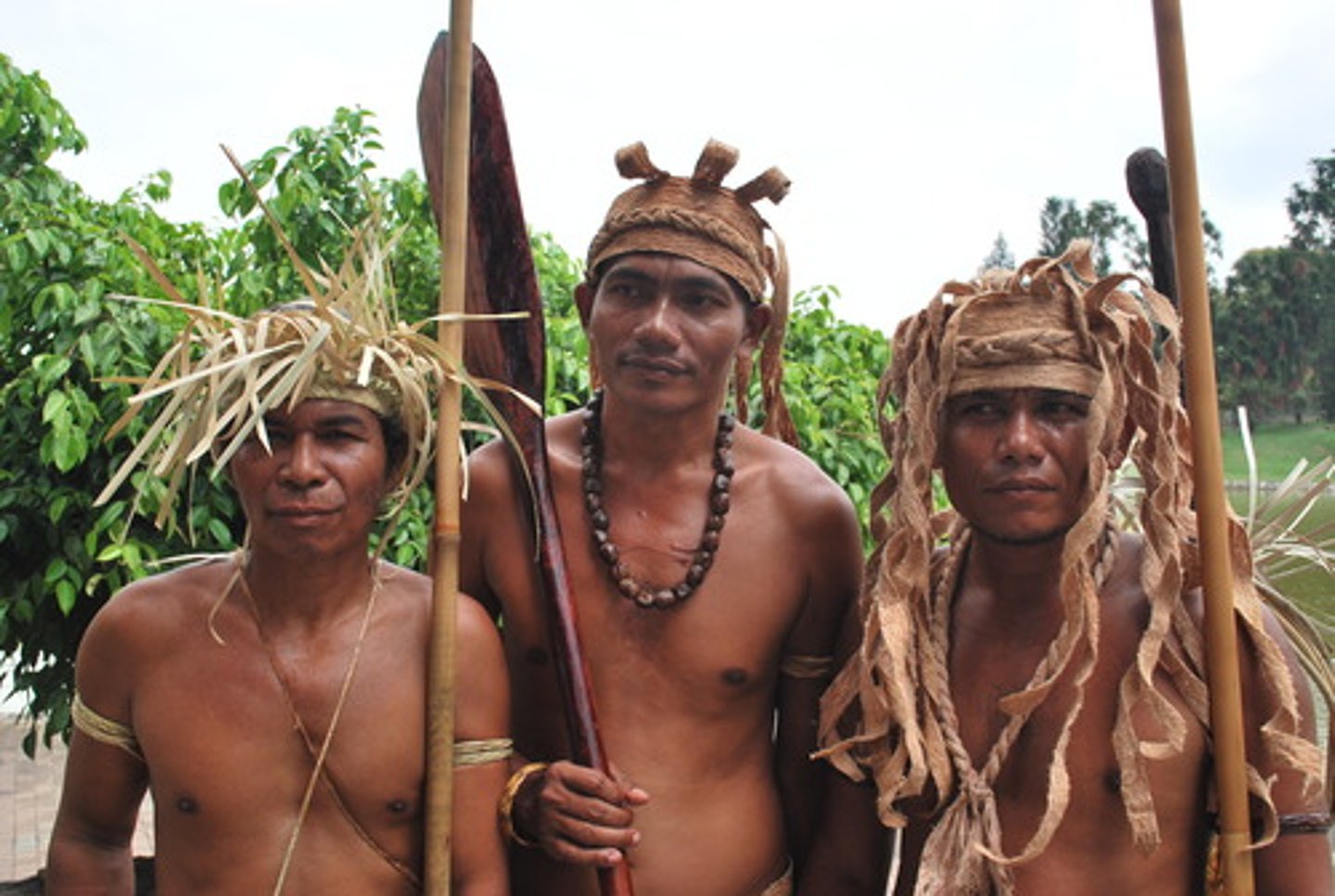
Urbanization
Refers to the process where people move from rural areas to urban areas, resulting in an increase in the proportion of a population living in cities and towns, often driven by factors like economic opportunities and employment growth. For example, the rapid growth of megacities like Mumbai, India or Mexico City, Mexico, where large numbers of people from rural areas migrate to these urban centers for employment opportunities, leading to a significant increase in the urban population and the expansion of the city's infrastructure.

Globalization
Refers to the increasing interconnectedness and interdependence of different regions and countries across the globe, characterized by the flow of ideas, goods, people, and capital through advancements in technology, transportation, and communication, leading to a more integrated world economy and cultural landscape. For example, a raw product might be harvested in central Africa, used to manufacture goods in China, and shipped around the world for sale.
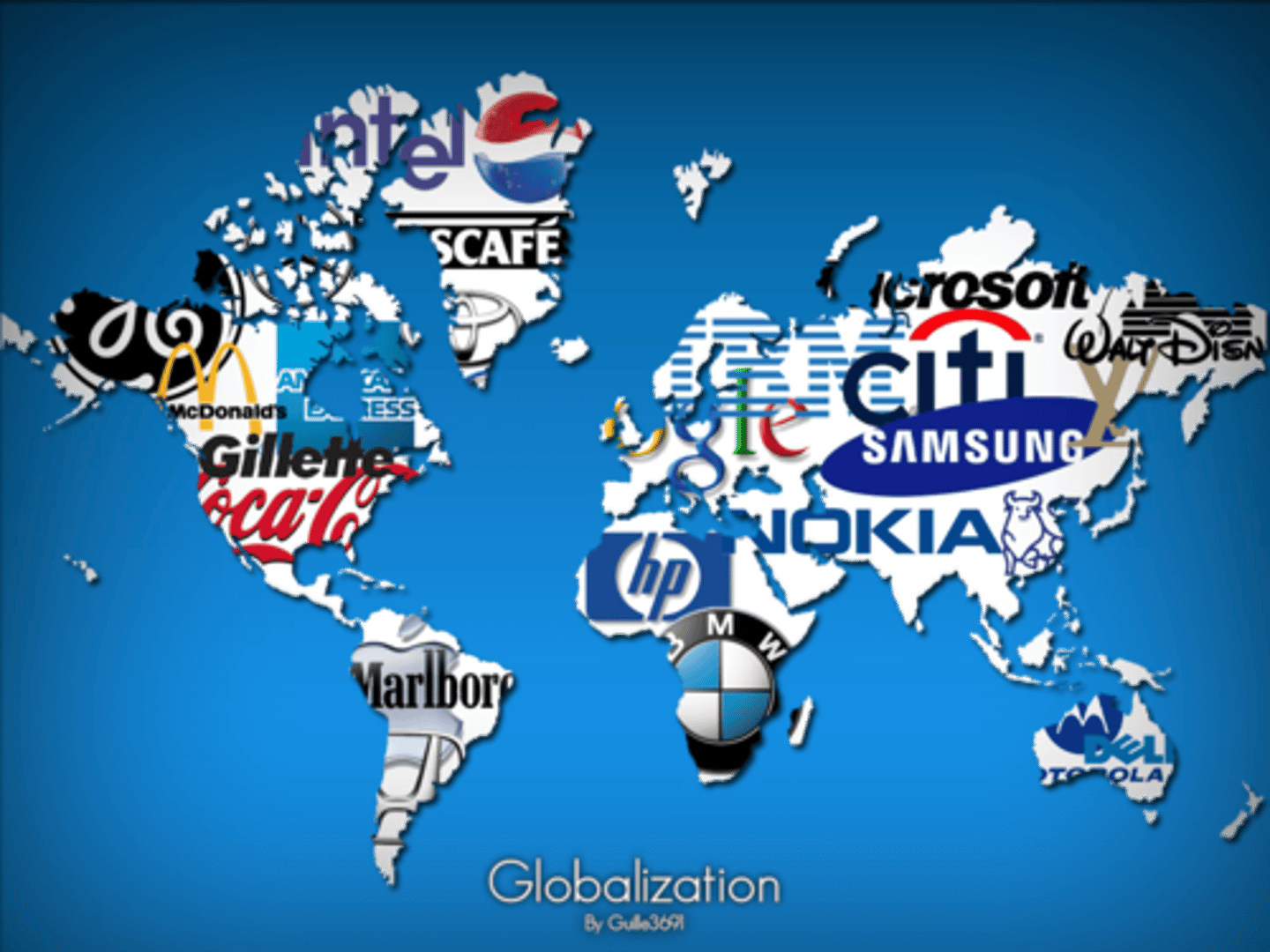
Material Culture
Refers to the physical objects and artifacts created by a society, including things like clothing, tools, buildings, art, and technology, essentially representing the tangible aspects of a culture that can be observed and studied. For example, Clothing, food, tools, buildings, artwork, furniture, vehicles, and technology can all be considered material culture.

Artifacts
Refers to any tangible object that represents a material aspect of a culture, essentially the visible, physical elements of a society like clothing, tools, food, architecture, or artwork, which can be observed and studied to understand a culture's practices and beliefs. For example, A traditional kimono from Japan: Represents Japanese clothing culture and customs

Mentifacts
Refers to the shared ideas, beliefs, and values of a culture, essentially representing the "mental" aspects of a culture, including things like religion, language, customs, and worldviews. For example, ideas such as democracy, freedom, and justice are values that some cultures hold important, while others do not.

Nonmaterial Culture
Refers to the intangible aspects of a culture, including beliefs, values, ideas, norms, and practices, which cannot be physically touched. For example, Greetings and gestures: Handshakes, bowing, or specific hand gestures depending on the culture. Etiquette rules: Table manners, social distancing norms.
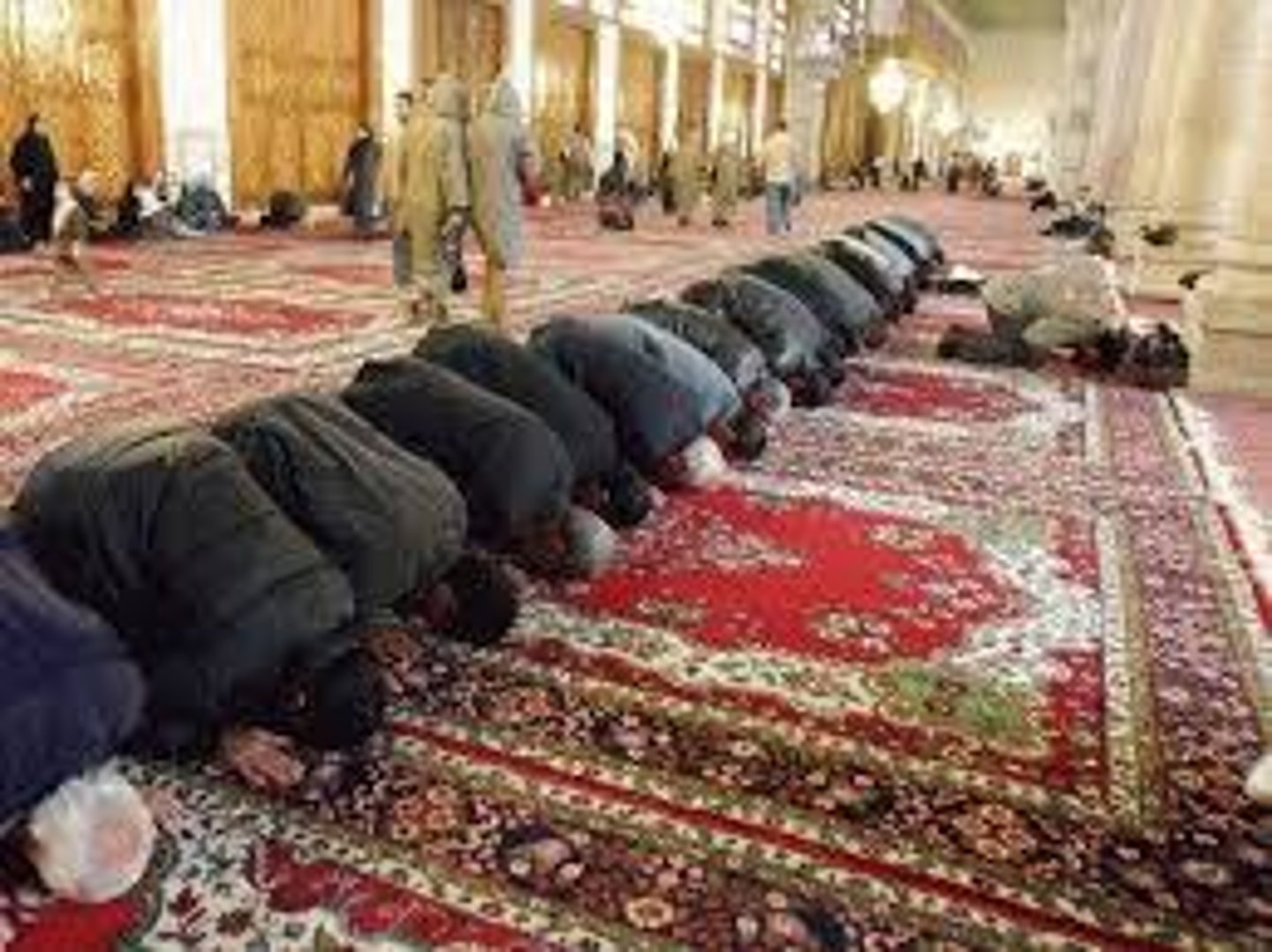
Sociofacts
Refers to the social structures and organizations within a culture that influence people's behavior, including things like family structures, government systems, religious groups, education systems, and social norms; essentially, the "how people interact" aspect of a culture. For example, the Caste systems in India, Political party structures, Laws regarding marriage and family formation, and educational systems and their curriculum.

Architecture
Refers to the design and construction of buildings, reflecting the cultural traditions, technological capabilities, and environmental adaptations of a society, essentially representing the built environment of a place and often revealing significant details about the people who inhabit it. For example, iconic structures like the Eifel Tower in Paris and the Taj Mahal in India serve as cultural symbols.

Cultural Landscape
Refers to a geographic area where the visible features of the landscape, including buildings, land use patterns, and agricultural practices, reflect the cultural imprint of the people inhabiting it, essentially showing how humans have modified the natural environment to suit their cultural needs and practices; it's a combination of both natural and human-made elements that reveal a society's unique cultural characteristics. For example, A historic town square in the American Midwest:
With a courthouse, churches, and buildings reflecting the architectural style of the region, showcasing the cultural influence of early settlers. A Native American reservation:
Where traditional land use patterns and sacred sites are still visible, demonstrating the cultural connection to the land. A terraced hillside in the Andes Mountains: Illustrating the adaptation of agriculture to a challenging environment, reflecting the cultural practices of the people living there.

Traditional Architecture
Refers to building styles and techniques that are characteristic of a specific culture or region, often utilizing locally available materials and reflecting the needs and customs of the people who inhabit that area, essentially representing the historical building practices of a particular community. For example, Adobe houses in the southwestern United States: These clay brick structures are well-suited to hot, arid climates. Thatched-roof cottages in Northern Europe: This design utilizes readily available materials like straw for insulation in colder climates. Mud-brick houses in the Middle East: These buildings are adapted to desert environments and often feature courtyards for cooling.

Postmodern Architecture
Refers to a style of building design that emerged as a reaction against the strict, minimalist aesthetics of modern architecture, often incorporating playful elements, historical references, and a focus on creating visually pleasing and contextually relevant buildings that connect with the local culture, rather than just prioritizing functionality alone. For example, Vanna Venturi House designed by Robert Venturi, which is considered one of the first prominent examples of the style due to its playful, non-uniform design that breaks away from the strict lines of modern architecture; other examples include the Piazza d'Italia by Charles Moore and the AT&T Building by Philip Johnson.
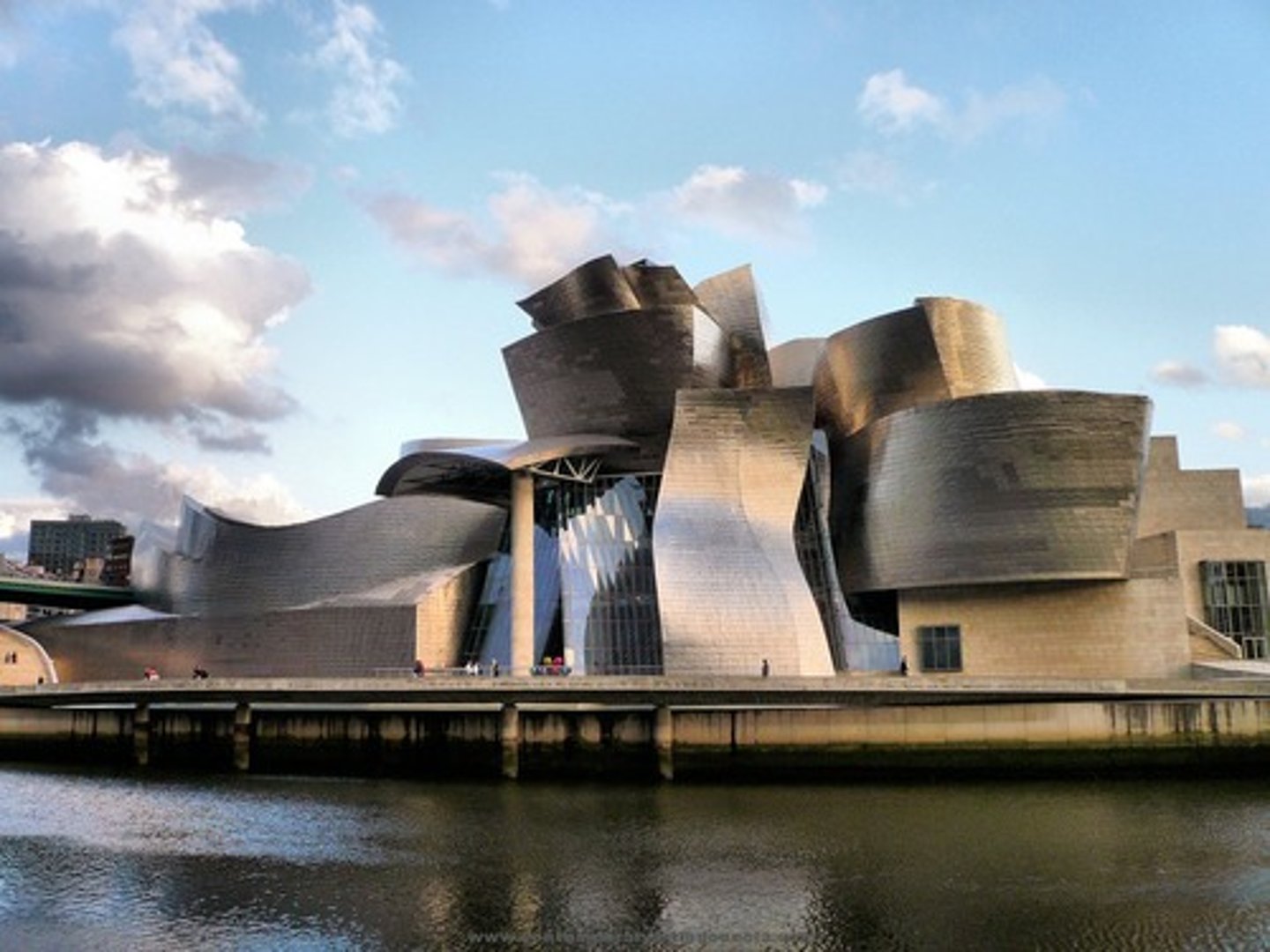
Land-Use Patterns
Refers to the spatial distribution and organization of different human activities on the land, including residential, commercial, industrial, and agricultural uses, across a given area, showcasing how people utilize land for various purposes and the patterns that emerge from these uses across a region. For example, the distinct pattern of crop distribution across an agricultural landscape, where different crops are grown in specific areas based on factors like climate and soil type, such as citrus fruits being primarily grown in frost-free regions; this demonstrates how environmental conditions influence land use decisions by farmers.
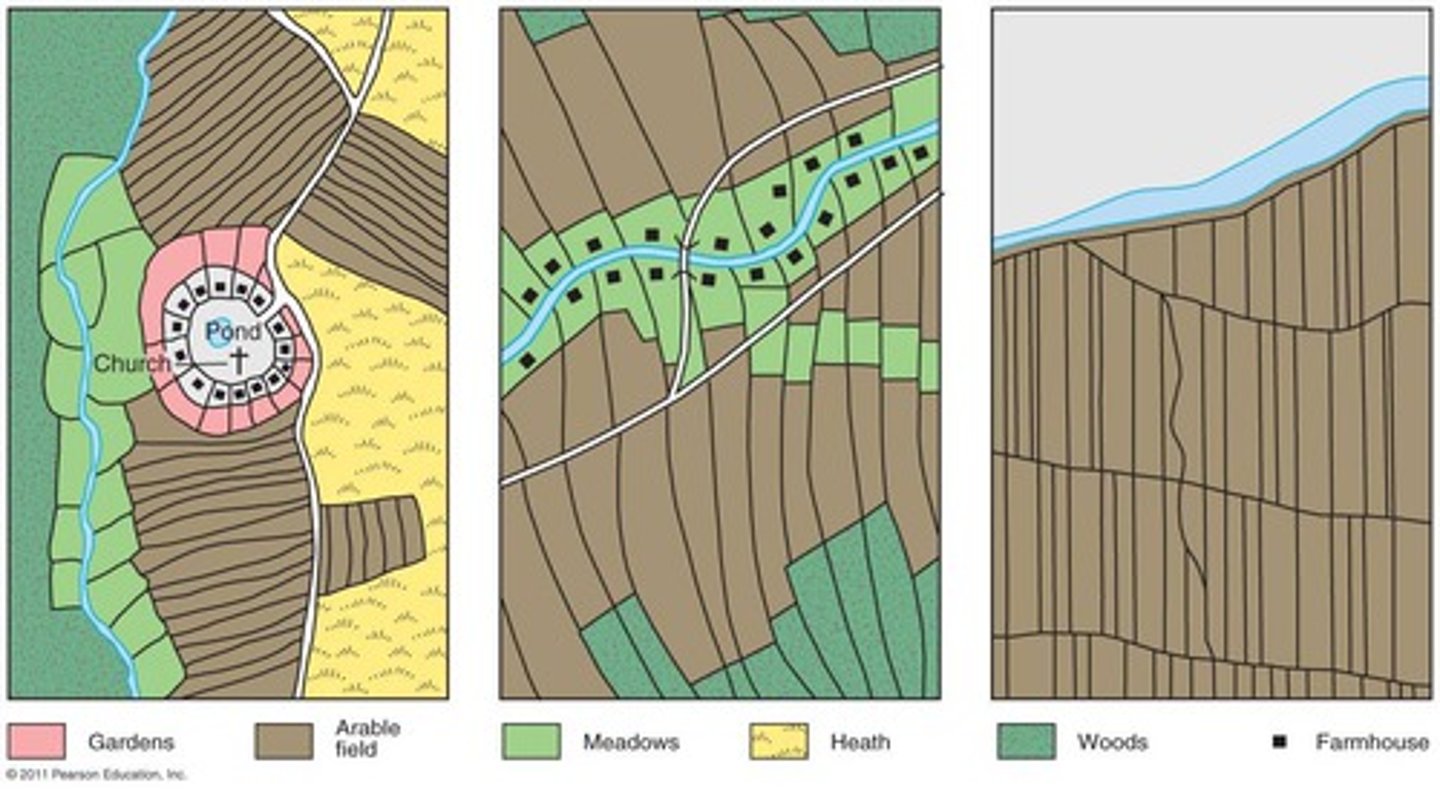
Linguistic Characteristics
Refers to the distinctive features of a language, including its vocabulary, grammar, pronunciation, and writing system, which can vary geographically and reflect the cultural context of its speakers; essentially, the unique traits that set one language apart from another. For example, the presence of distinct dialects within a country or region, where different vocabulary and pronunciation patterns are used depending on the local area; for instance, the different accents and phrases used in the southern United States compared to the northeast, or the variation in Spanish dialects across Latin America.
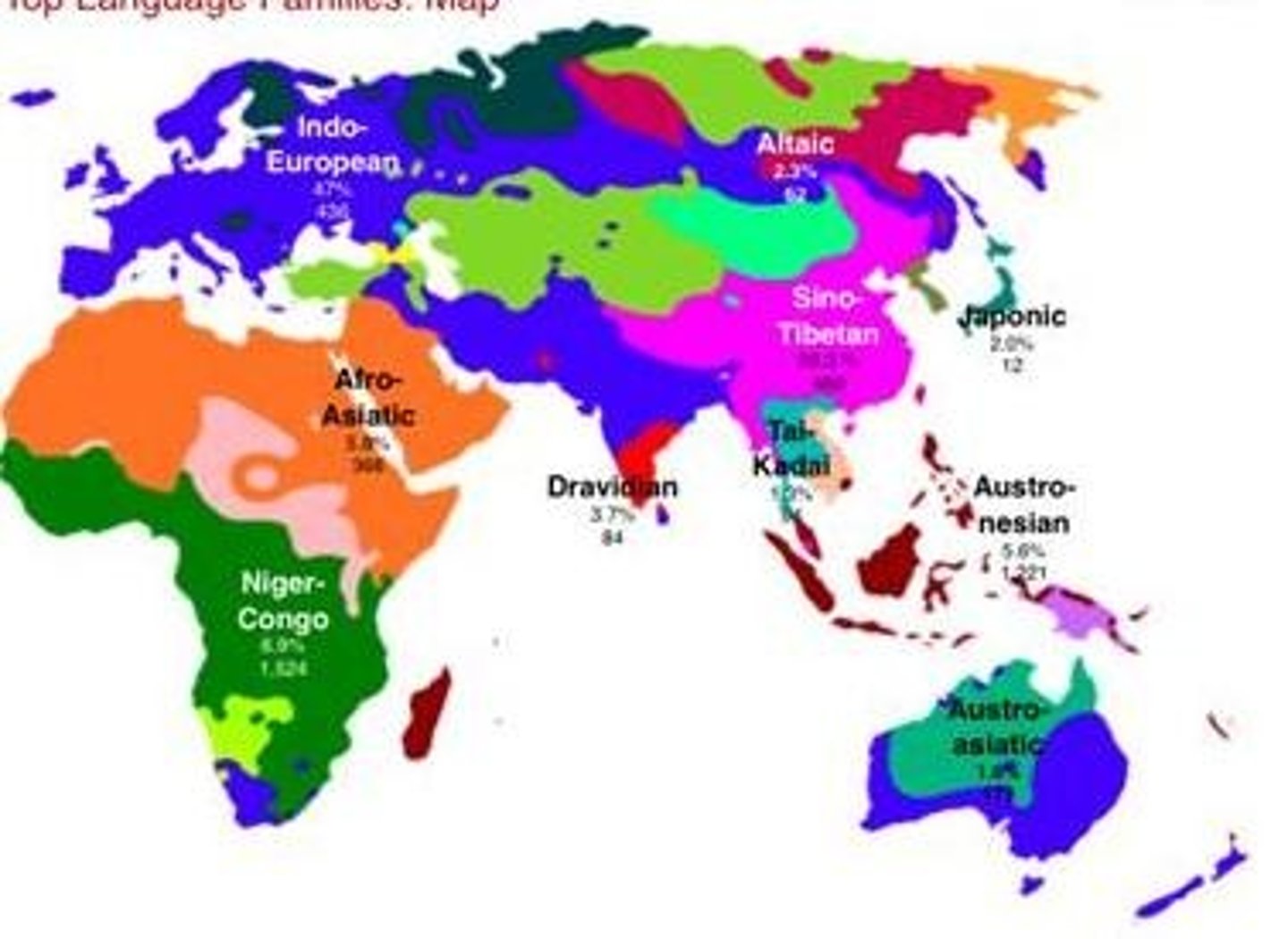
Religion
A system of beliefs and practices that recognize a higher power beyond humanity, often including rituals, sacred spaces, and a set of values that shape a community's cultural identity. For example, Islam, Hinduism, Christianity, Buddhism, and Judaism.
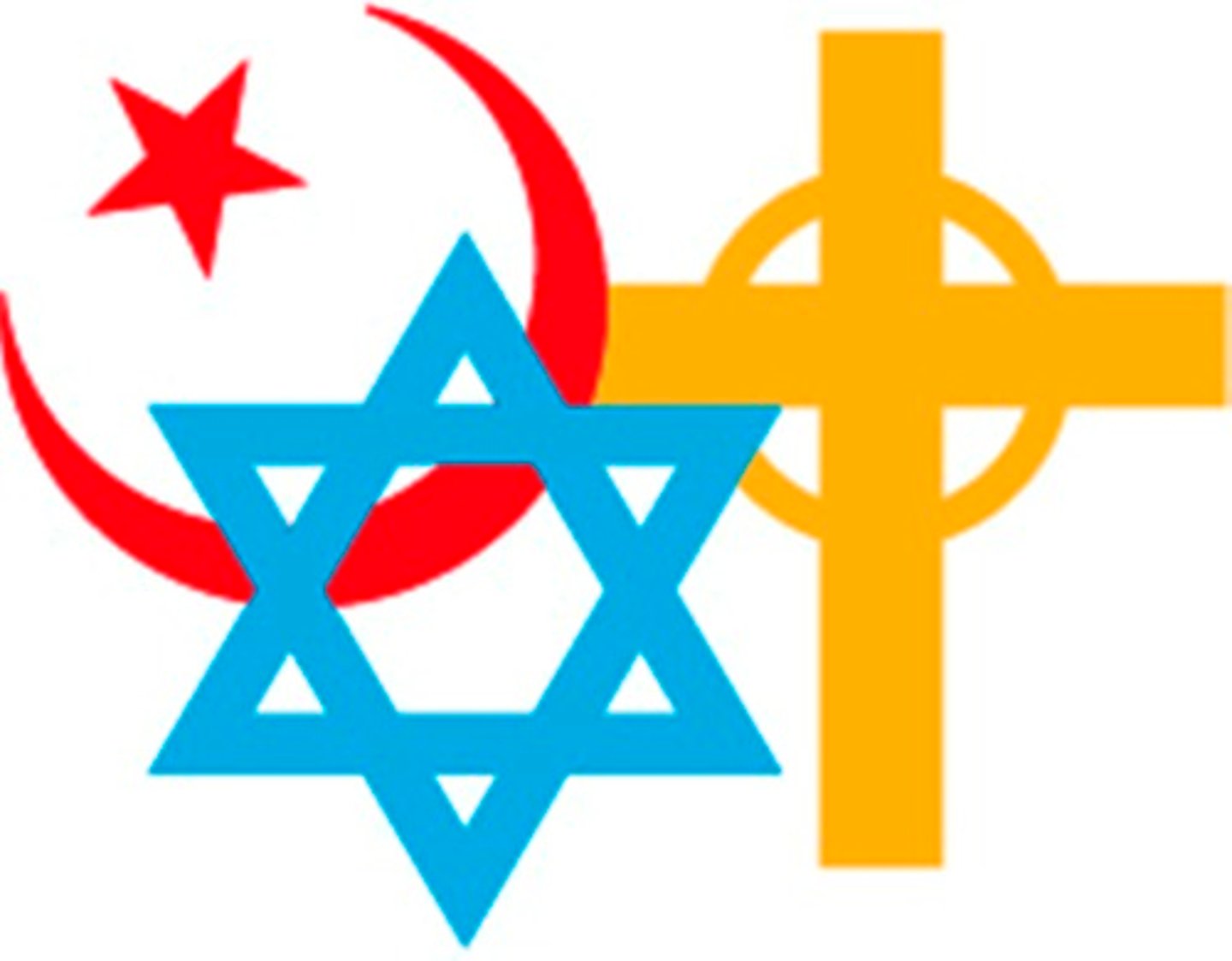
Diaspora
Refers to a scattered population of people who share a common cultural, ethnic, or religious identity but live outside their ancestral homeland, often due to historical events like migration or forced displacement; essentially, a community dispersed across various regions while maintaining ties to their origin place. For example, the "African diaspora," which refers to the large population of people of African descent scattered across the Americas, Caribbean, and other parts of the world due to the transatlantic slave trade, maintaining cultural connections despite being geographically dispersed from their original homeland.
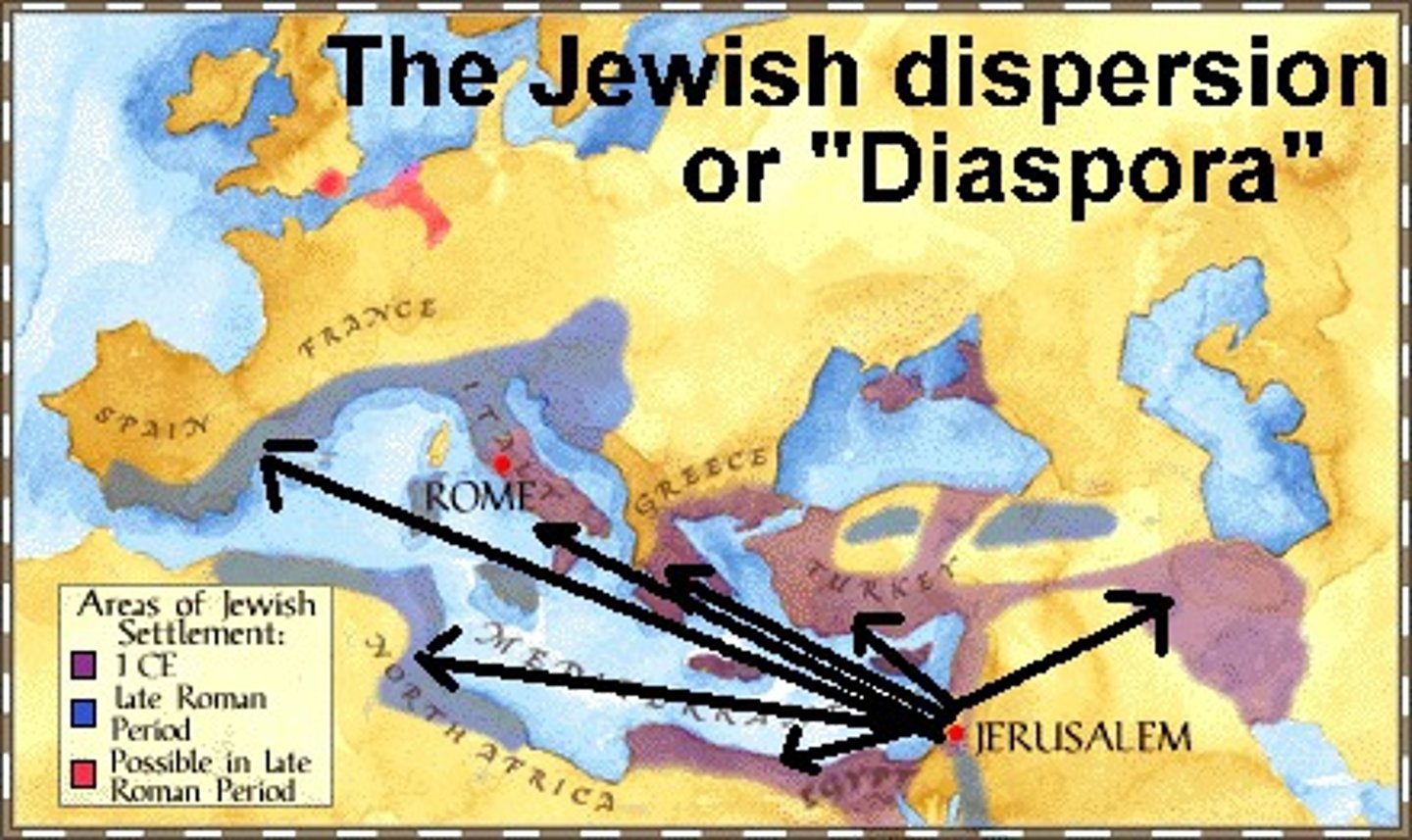
Sequent Occupancy
Refers to the successive cultural imprints left on a landscape by different groups of people over time, essentially showing how various cultures have occupied and modified a region throughout history, leaving behind visible evidence of their presence in the current landscape. For example, the city of Istanbul (formerly Constantinople), where different cultures have occupied the same space over time, leaving behind visible layers of architecture and cultural influence, like the Hagia Sophia which was once a Christian cathedral, then a Muslim mosque, and now a museum; showcasing the transition between Byzantine, Ottoman, and modern Turkish rule.

Cultural Relativism
Means understanding and interpreting a culture based on its own norms and values, without judging it through the lens of one's own culture; essentially, viewing a culture from its own perspective rather than applying external standards to evaluate it. For example, Instead of simply seeing arranged marriage as "backward" or oppressive, cultural relativism encourages analyzing how it functions within a particular community, considering factors like family honor, social stability, and economic considerations.

Ethnocentrism
Refers to the tendency to judge other cultures based on the standards and values of one's own culture, often leading to the belief that one's culture is superior to others, essentially viewing other cultures through the lens of your own and potentially leading to negative judgments or misunderstandings. For example, A tourist criticizing a local food in another country because it doesn't taste like food they are used to at home. Believing that English should be the only language spoken globally and judging those who don't speak it.

Ethnicity
Refers to a person's identity with a group of people who share a common cultural heritage, often including language, religion, traditions, and ancestry, which ties them to a specific homeland or hearth, distinct from race which is based on biological characteristics. For example, Hispanic-Americans, African-Americans, Chinese-Americans, or Polish-Americans.
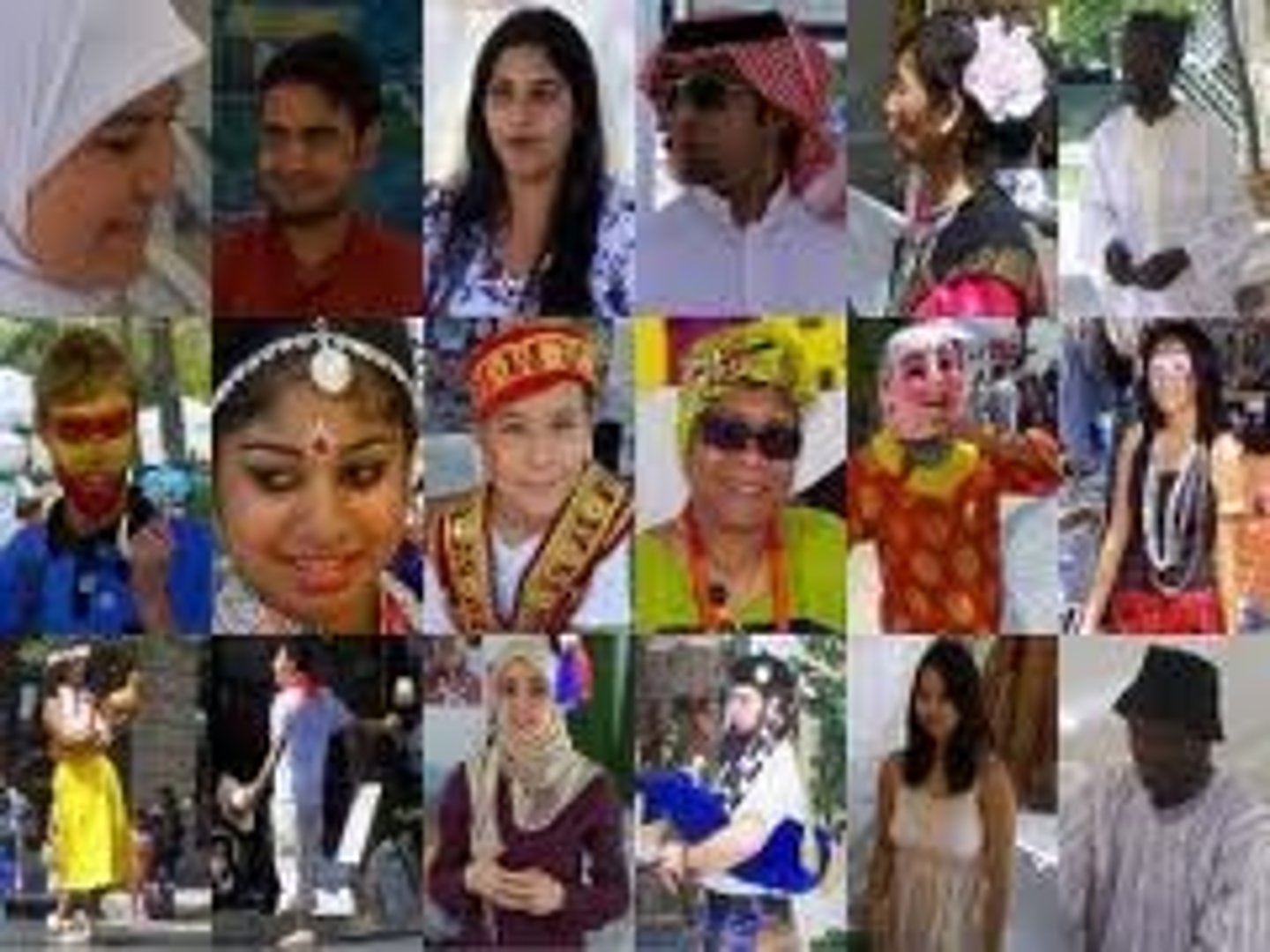
Sense of Place
Refers to the emotional connection and personal meaning a person attaches to a particular location, based on their experiences, memories, and understanding of the place's unique characteristics, essentially creating a feeling of belonging or attachment to that specific area. For example, A native New Yorker's deep connection to the hustle and bustle of Times Square. A rural farmer's strong attachment to their land and the surrounding natural landscape. A religious community's strong sense of belonging within their sacred place of worship.
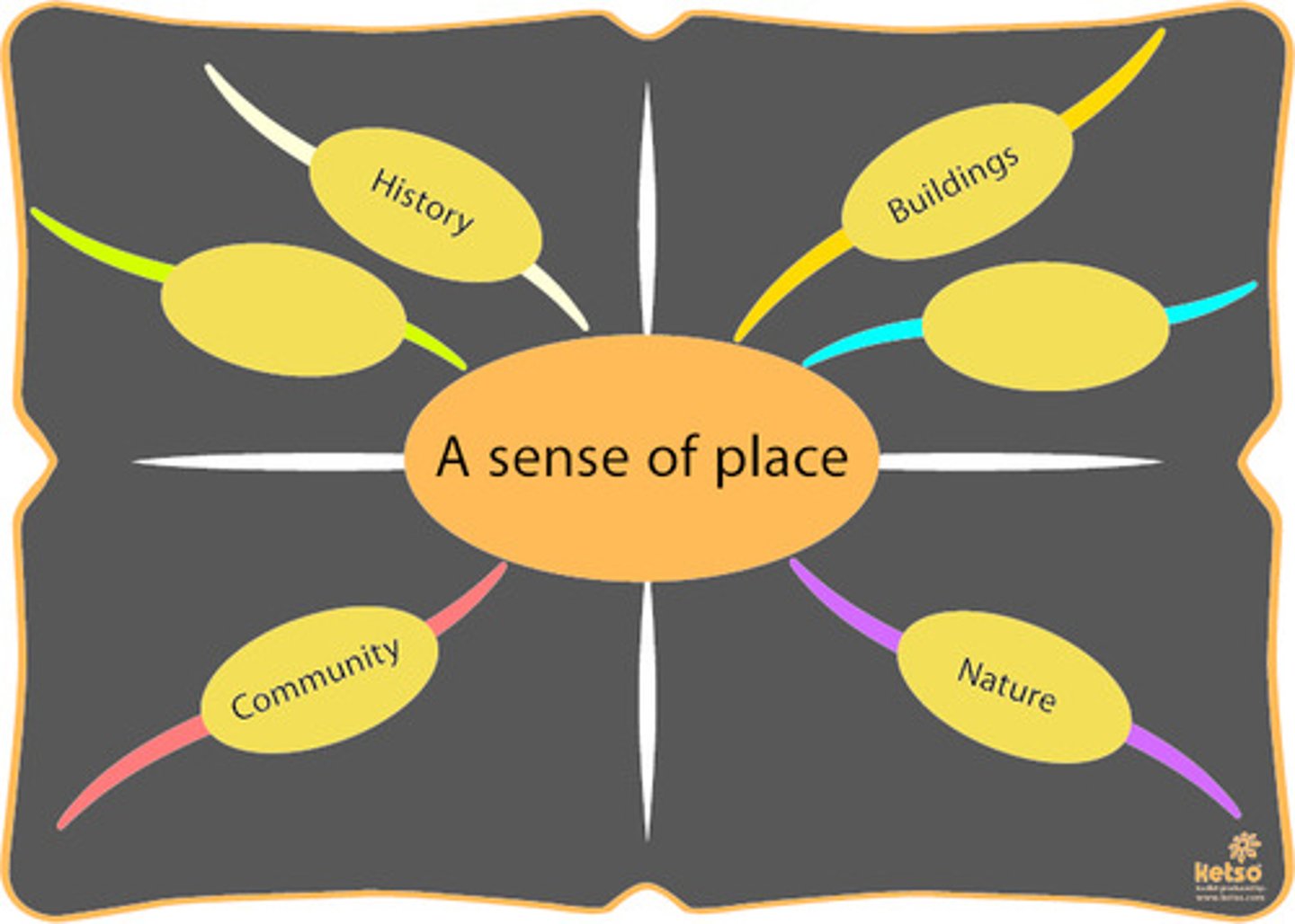
Placemaking
Refers to the intentional process of designing and managing public spaces to foster a strong sense of community and belonging within a place, by considering the needs and aspirations of local residents, often involving community engagement to create spaces that reflect the unique cultural and social identity of that area. For example, Chicago's Millennium Park is a premier example of a placemaking project that has become a cultural landmark. Featuring iconic sculptures, gardens, and performance spaces, it has transformed the city's downtown area into a dynamic public space that attracts visitors and locals alike.
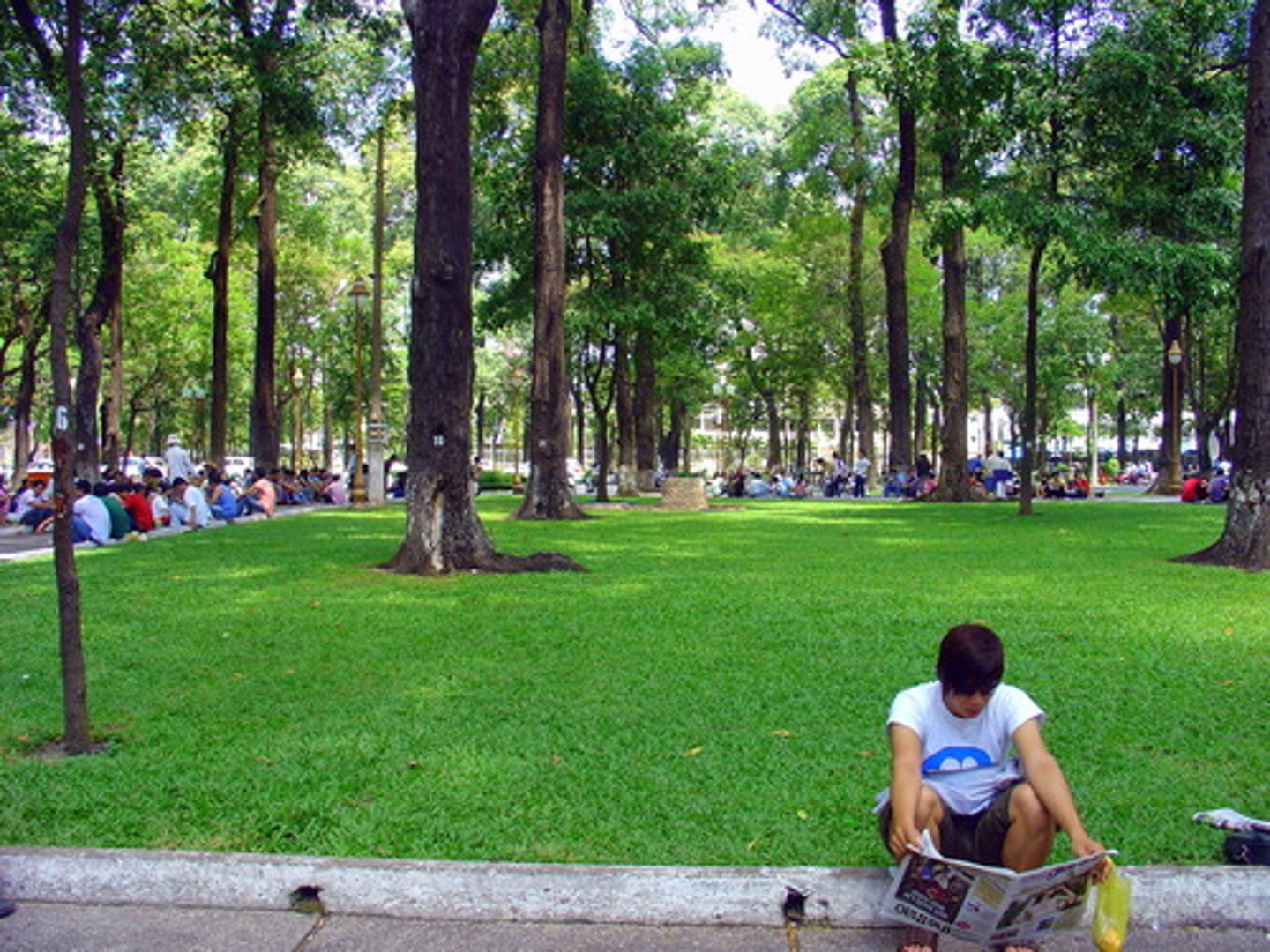
Centripetal Force
Refers to a unifying factor that binds a state together, creating a sense of national identity and stability by pulling people towards a common center, often through shared cultural elements like language, religion, or nationalism; essentially, it's a force that keeps a country united. For example, Shared language: A common language across a country, facilitating communication and fostering a sense of shared identity. Religion: A dominant religion that unites people across different regions.

Centrifugal Force
Refers to a factor that tends to divide a state or country by pulling people apart, often due to differences in ethnicity, religion, language, or economic disparities, creating tensions and potentially leading to political instability; essentially, it's a force that works against the unity of a nation. For example, the Kurds in Iraq, Turkey, and Syria seeking their own independent state; other examples include large language barriers within a nation, uneven economic development across regions, or historical grievances between different groups within a country causing tension and potential for division.
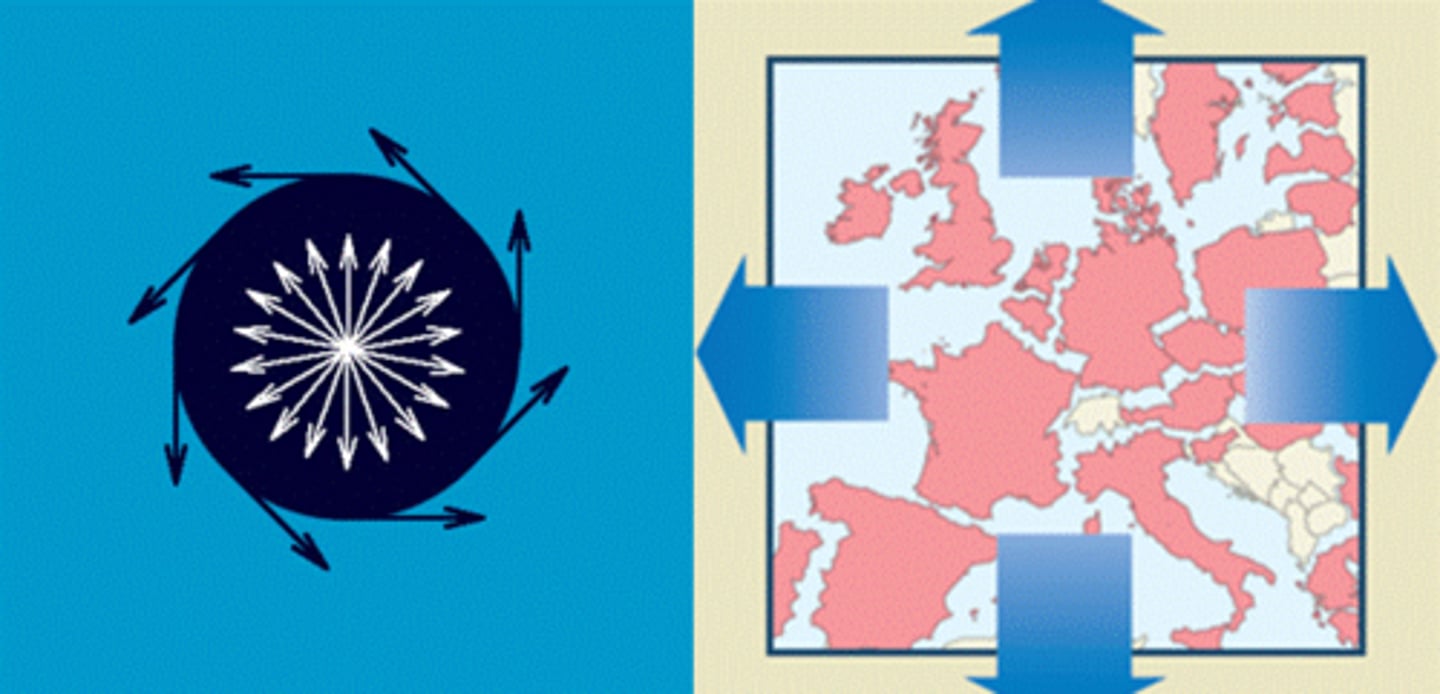
Relocation Diffusion
Refers to the spread of cultural traits or ideas from one place to another through the physical movement of people, essentially meaning that when people migrate, they bring their cultural practices with them to their new location, thus spreading those practices to the new area. For example, the spread of a language like Spanish throughout the Americas due to the migration of Spanish colonists, where they brought their language with them to their new settlements, effectively "relocating" their culture to a new area.

Contagious Diffusion
Refers to a type of expansion diffusion where an idea, innovation, or cultural practice spreads rapidly and widely through a population, similar to how a contagious disease spreads, primarily through direct person-to-person contact, without regard to social hierarchies or geographic barriers; essentially, it "catches on" quickly among people in close proximity to the origin point. For example, New slang spreading through a school: When a new phrase becomes popular among a group of friends, and then quickly spreads to their friends, and so on throughout the school. Fashion trends spreading through social media: A new style of clothing becoming popular on social media platforms, leading to many people adopting it quickly. A new dance craze going viral:
When a new dance move becomes popular on video platforms, and people start imitating it widely.
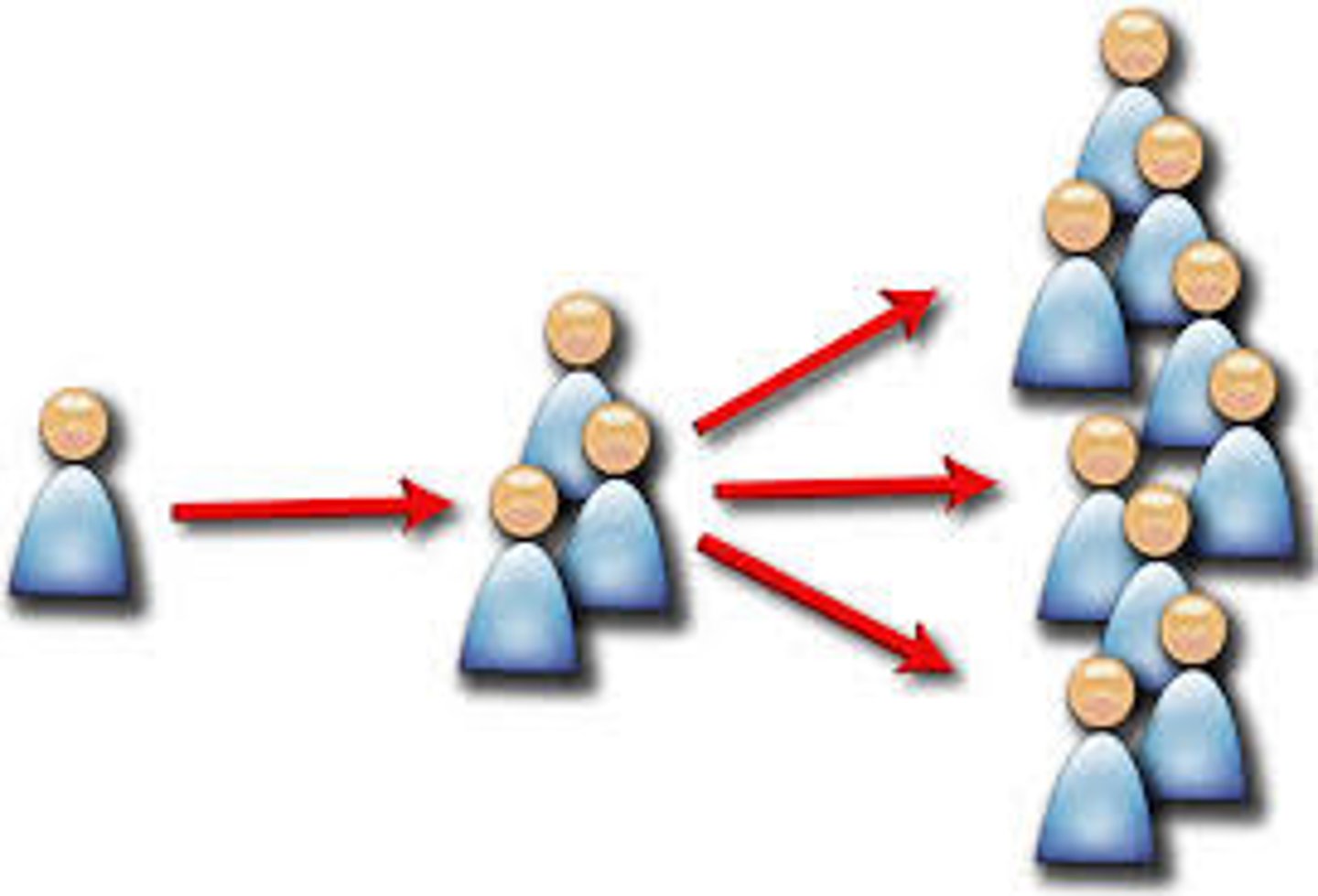
Expansion Diffusion
The spread of a cultural trait or innovation from a central point to surrounding areas, where the original hearth (source) continues to practice or exhibit the trait, essentially "expanding" its reach without significant population movement; it's a type of diffusion where the cultural element grows stronger in its origin while spreading outwards to new areas. For example, Islam has spread throughout the world, yet stayed strong in the Middle East, where it was founded.
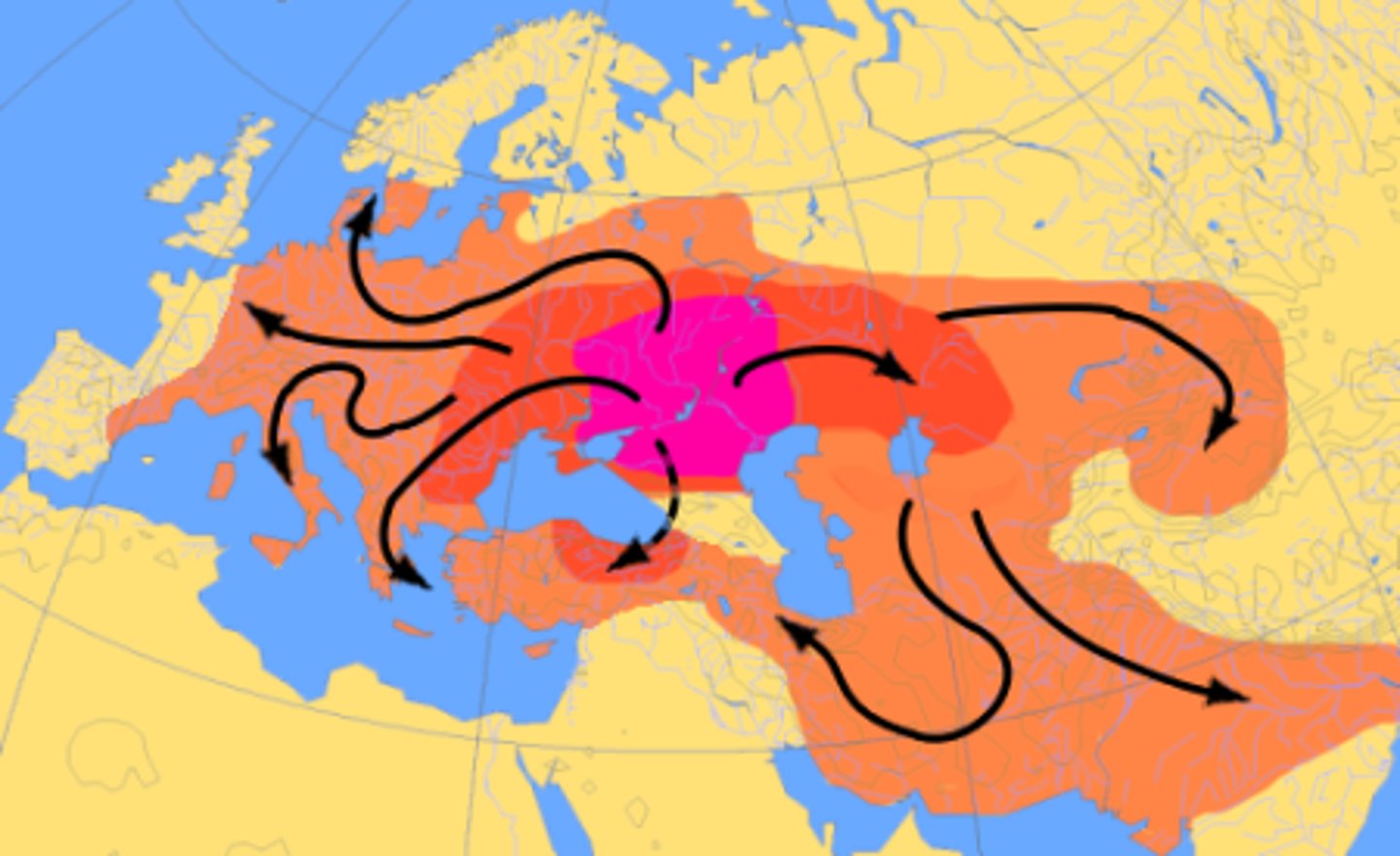
Hierarchical Diffusion
Refers to the spread of a cultural trait or idea from a point of power or authority, like a major city or influential group, gradually moving down to smaller, less influential areas or people, essentially spreading "top-down" through a hierarchy; it's a type of expansion diffusion where the spread occurs through established power structures. For example, A new marketing campaign launched by a large company spreading to smaller regional distributors. A government policy change implemented at the national level and then adopted by local governments. A new medical treatment being adopted by major hospitals and then gradually spreading to smaller clinics.
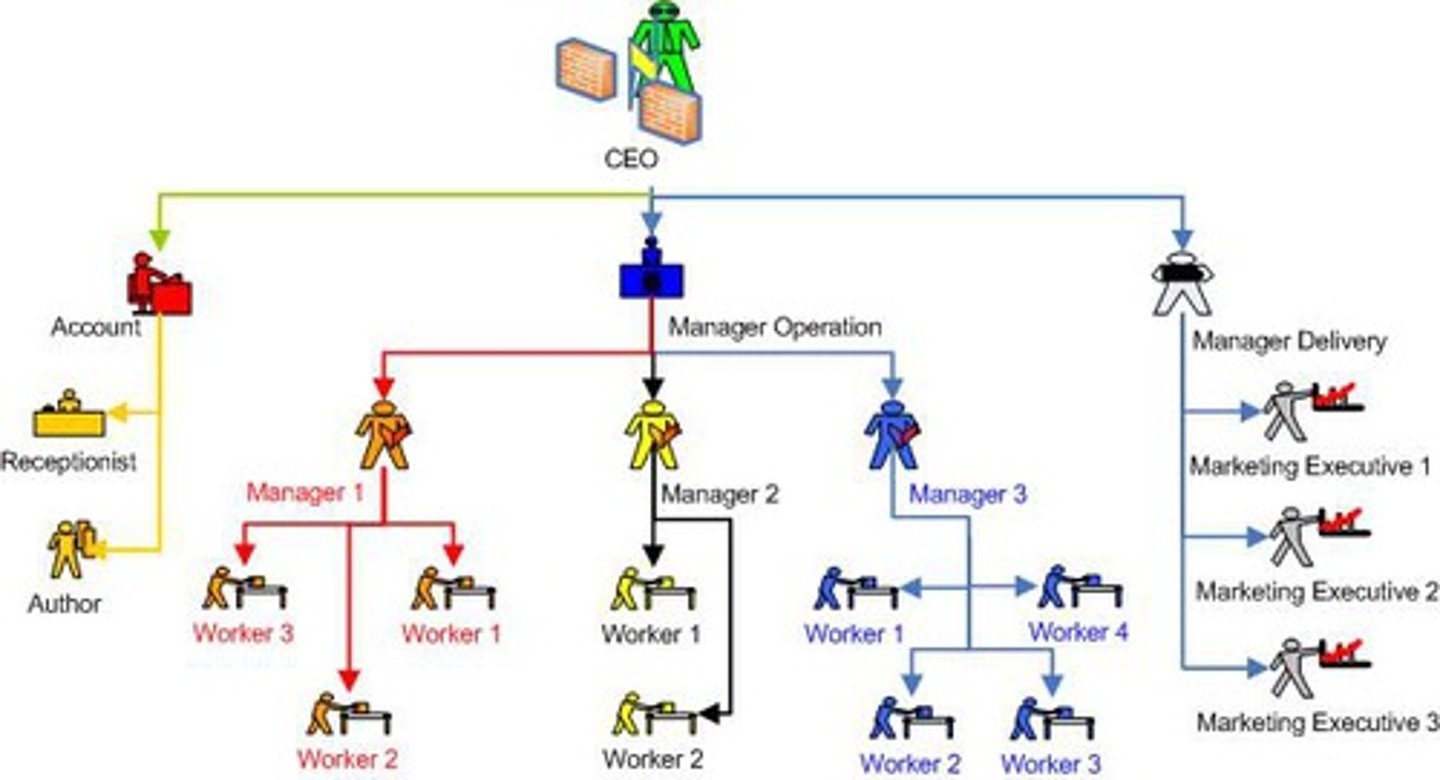
Reverse Hierarchical Diffusion
refers to the spread of a cultural trend or idea from the lower levels of a hierarchy to the higher levels, essentially moving "upwards" in a social structure; it involves a trend originating from a smaller, less influential group and then gaining traction among more powerful or widely recognized groups. For example, Local music scene gaining national recognition:
A band from a small town gaining a large following through online platforms and eventually touring in major cities.
Small business innovation spreading to larger markets: A unique product or service developed by a small business in a rural area becoming popular and adopted by larger businesses in urban areas. Grassroots movements gaining momentum: A social movement starting in a small community and gaining widespread support through activism and social media, eventually influencing larger political landscapes.

Stimulus Diffusion
Refers to the spread of a cultural idea or practice where the core concept is adopted by a new culture, but is significantly modified to fit the local context, essentially taking inspiration from the original idea while changing its form to suit the new environment; it's a type of cultural diffusion where the basic principle remains the same, but the details are adapted to fit the new place. For example, the way fast food chains adapt their menus to accommodate local tastes, like offering vegetarian options in India.

Creolization
Refers to the process where elements from different cultures blend together to create a new, hybrid culture, often occurring through colonization and migration, resulting in a unique cultural expression that combines aspects of various source cultures; essentially, it's the mixing of cultural traits to form a new cultural identity, commonly seen in regions like the Caribbean where diverse populations interacted due to colonialism. For example, the creation of Haiti Creole by enslaved Africans, using grammar from African languages and French vocabulary.

Lingua Franca
A language that is adopted as a common means of communication between people speaking different native languages, particularly in areas with diverse linguistic groups, often used for trade and business interactions; essentially, a "common language" used to facilitate understanding across language barriers. For example, In today's interconnected world, English serves as the primary language for international communication online and in business dealings.
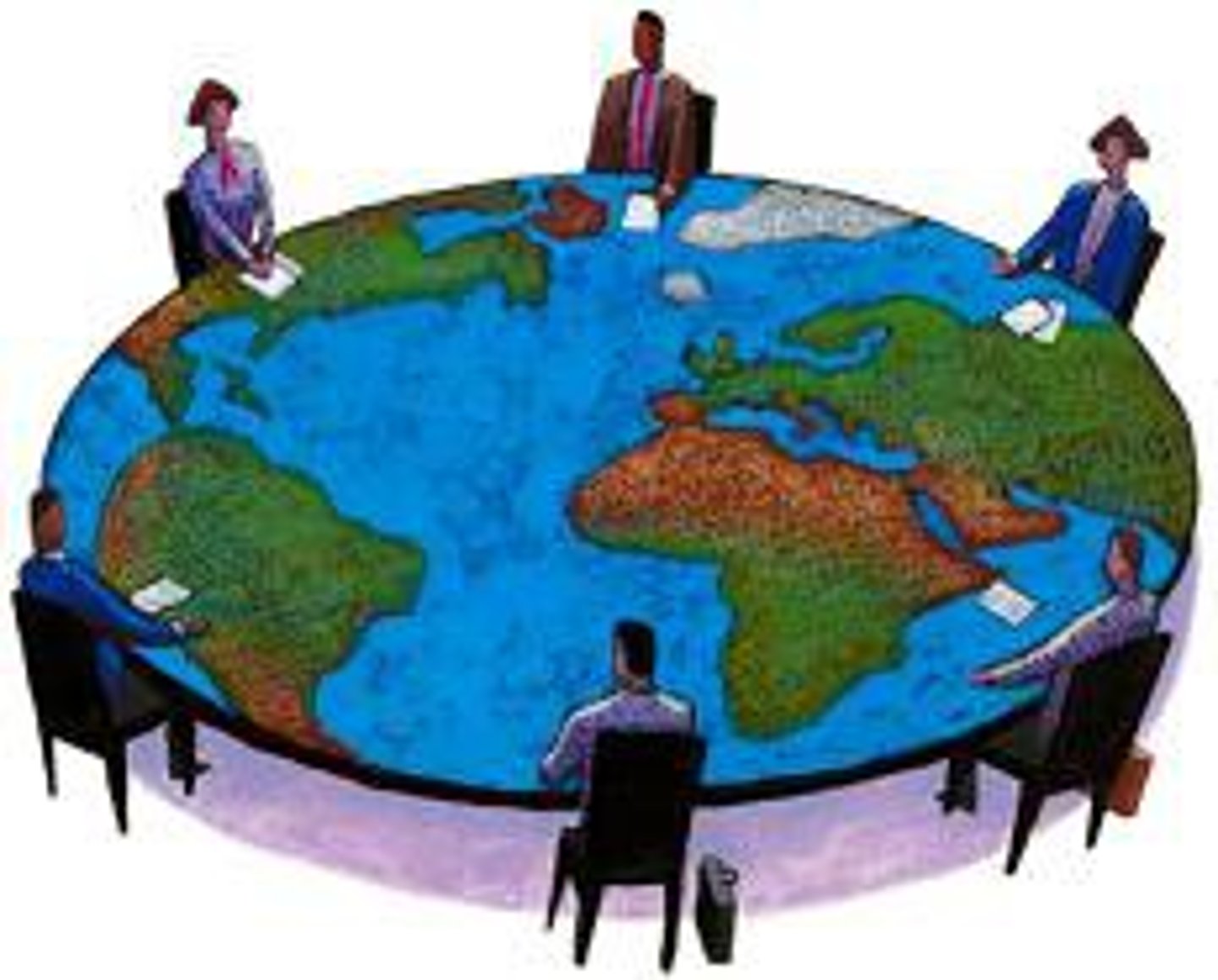
Colonialism
Refers to the practice where one nation establishes political, economic, and cultural control over another territory, often by settling colonists there, exploiting its resources, and imposing their own systems upon the indigenous population, essentially dominating a foreign land for their own benefit; this results in the creation of a "colony" under the control of the colonizing power. For example, when the European's settled in the western hemisphere to colonize. A territory that is legally tied to a sovereign state rather than completely independent. Example: The New England Colony that was established by British settlers.
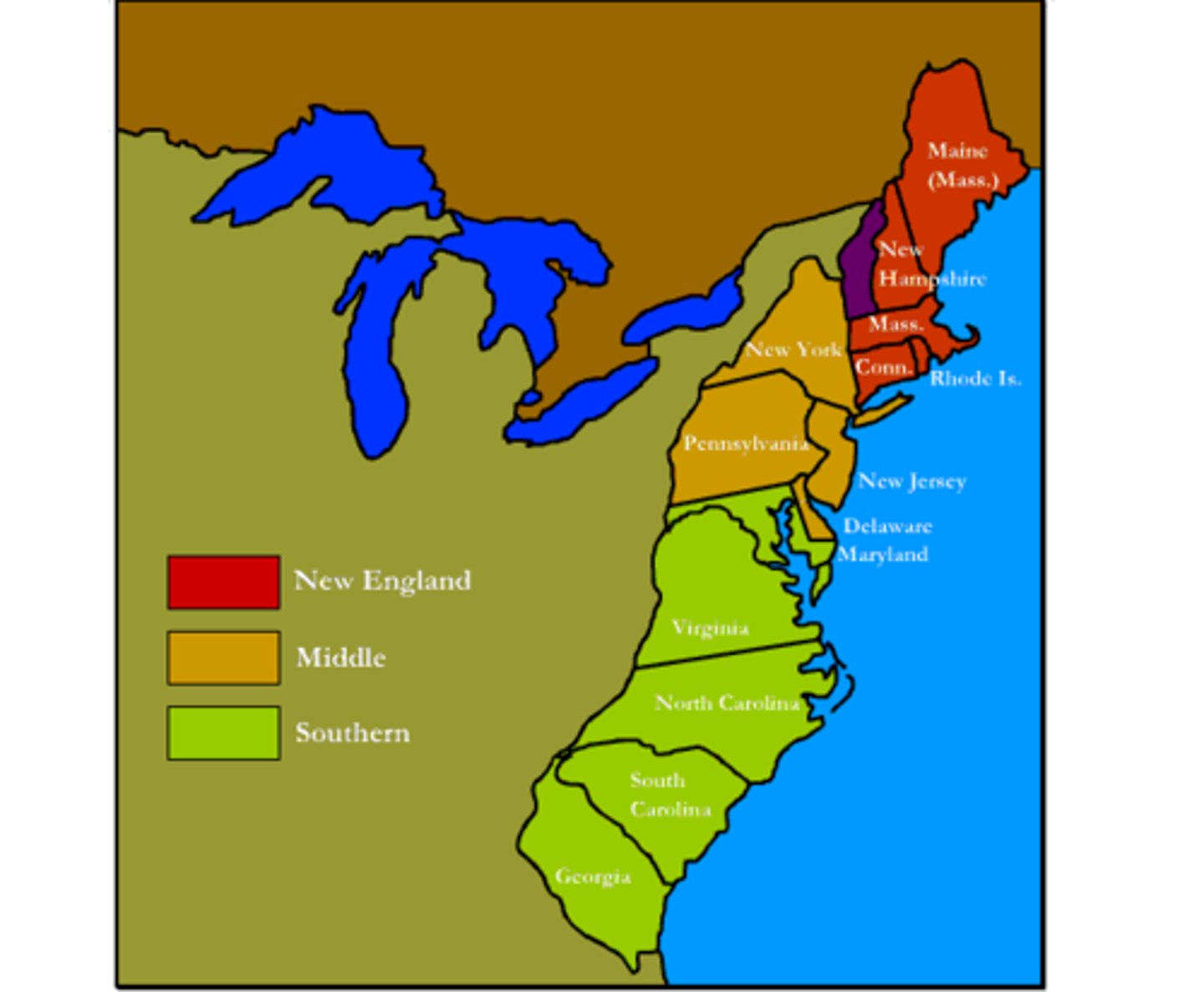
Imperialism
Refers to the policy of a powerful nation exerting control over other territories, often through military force or political influence, to gain economic or political advantages, usually without establishing large settlements in the conquered land. For example, The Scramble for Africa: European powers dividing up the African continent into colonies, leading to intense exploitation of resources and local populations.
King Leopold II's rule in the Congo Free State: A particularly brutal example of exploitation in Africa, where rubber extraction was enforced through violence and mutilation.
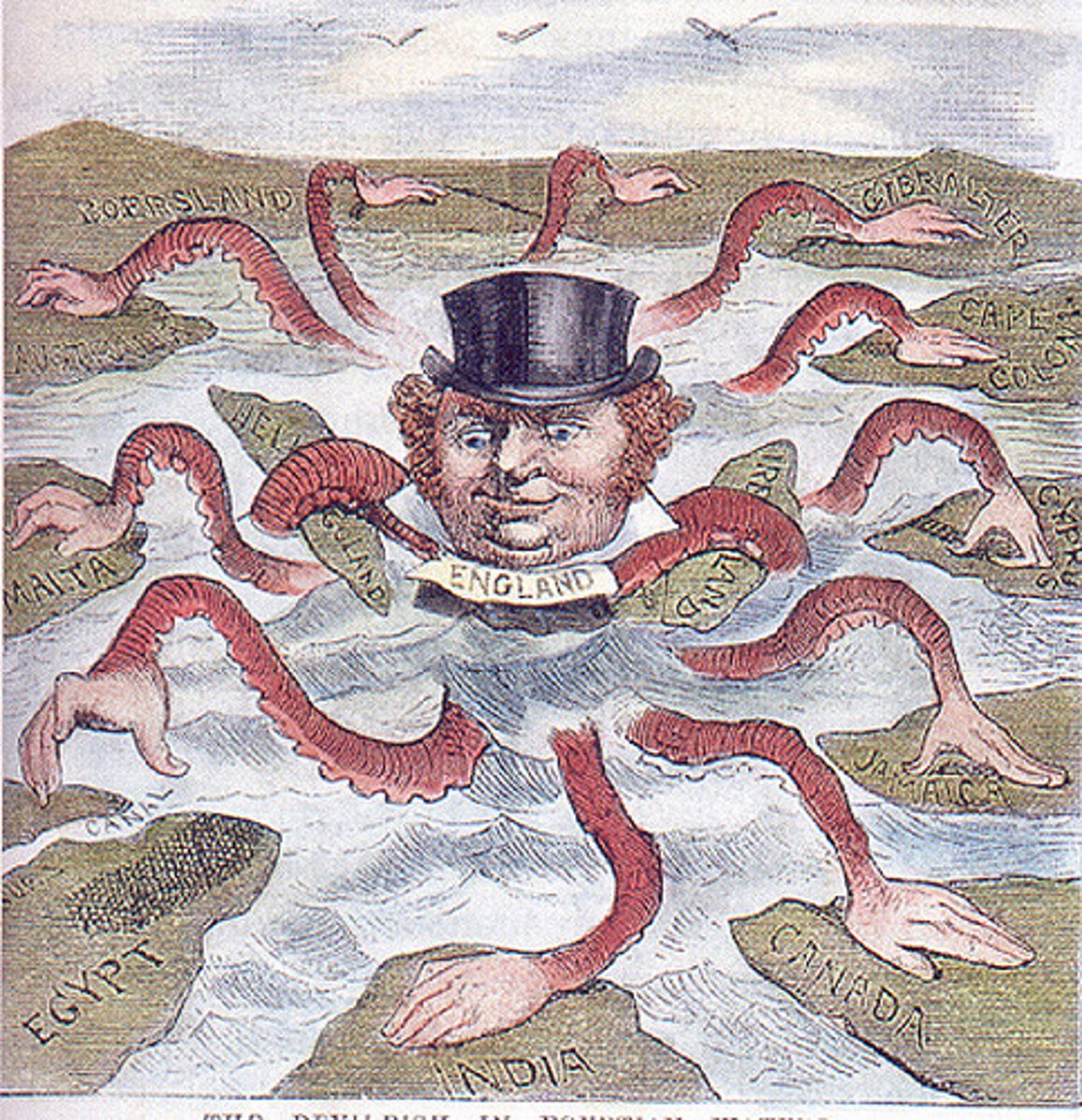
Indigenous Language
Refers to a language native to a particular region, spoken by the original inhabitants of that area, often deeply intertwined with their culture and identity, and distinct from languages brought in by colonizers or later migrants; essentially, it's the language of the "first people" of a place. For example, Maori (New Zealand), Inuktitut (Canada), Quechua (South America), or Navajo (Native American).
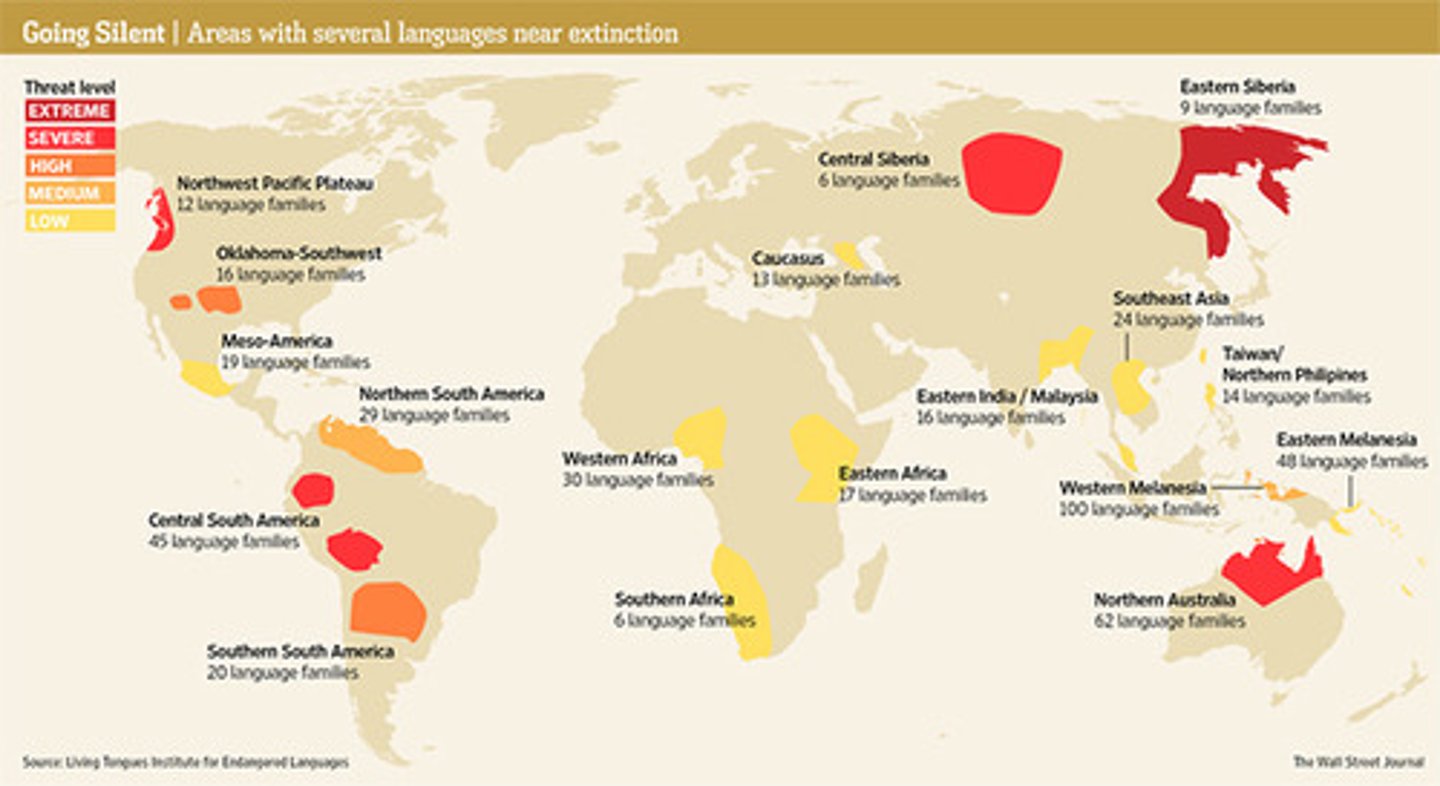
Social Constructs
refers to a concept, category, or idea that is not inherently real but is created and given meaning through social interactions and collective agreement within a society, essentially meaning that its reality is constructed by people's beliefs and behaviors rather than existing independently; examples include race, gender roles, and even the value of money.

Time-Space Convergence
refers to the phenomenon where the perceived distance between places decreases due to advancements in transportation and communication technologies, essentially making it feel like places are closer together because travel time is reduced significantly. For example, Faster travel options:
The development of airplanes allowing for rapid long-distance travel, significantly reducing travel time between continents compared to earlier methods like sailing. Globalization of business: Companies conducting business across borders through online platforms, enabling near-instantaneous communication and collaboration with colleagues in different time zones. Remote work: People working from home and communicating with colleagues in different locations through video conferencing tools, reducing the need for physical proximity to collaborate.
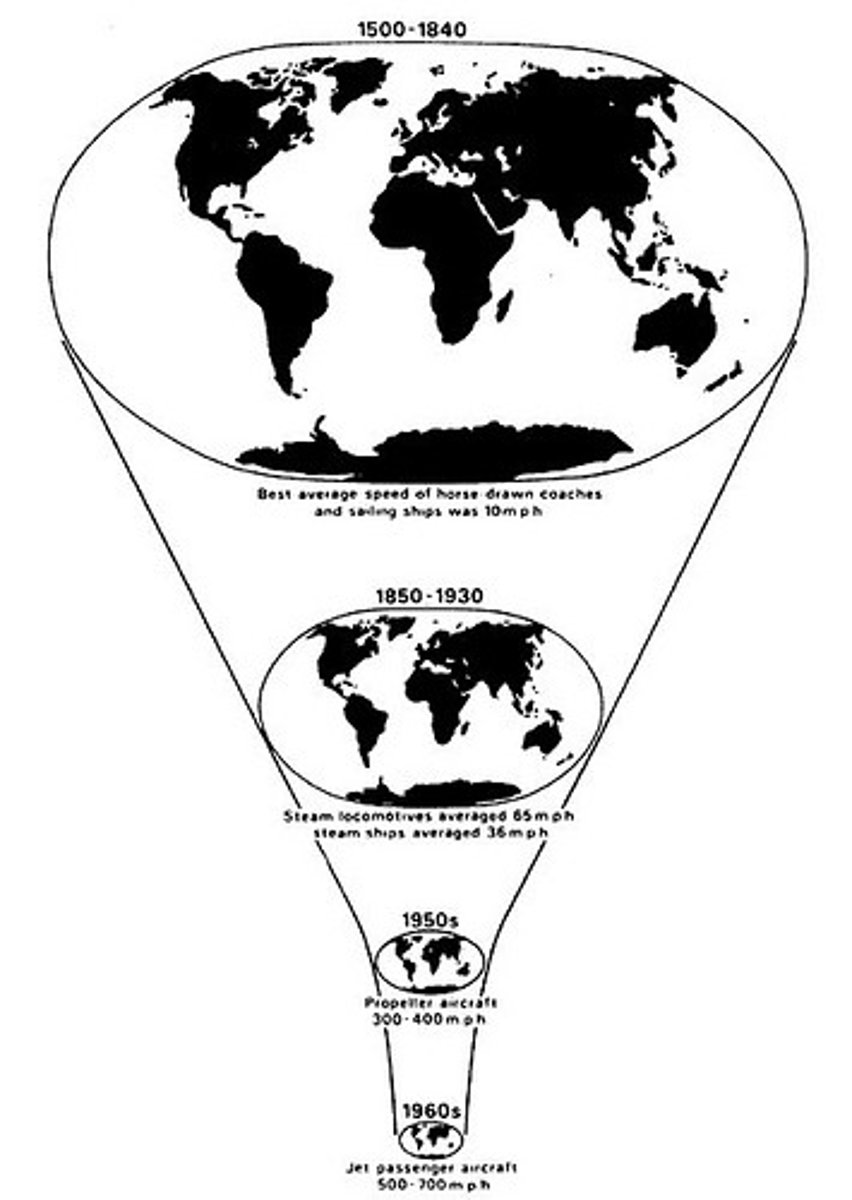
Cultural Convergence
Refers to the process where different cultures increasingly share similar traits and practices due to increased interaction and exposure to one another, often facilitated by globalization, leading to a blending of cultural elements and a decreased level of distinct cultural differences between societies; essentially, cultures becoming more alike over time through contact. McDonald's is an excellent example of cultural convergence because it is an American fast-food chain that serves American style food at locations around the world. While many menu items are the same in all locations, such as their fries, there are slight changes to menu items to match the local culture.
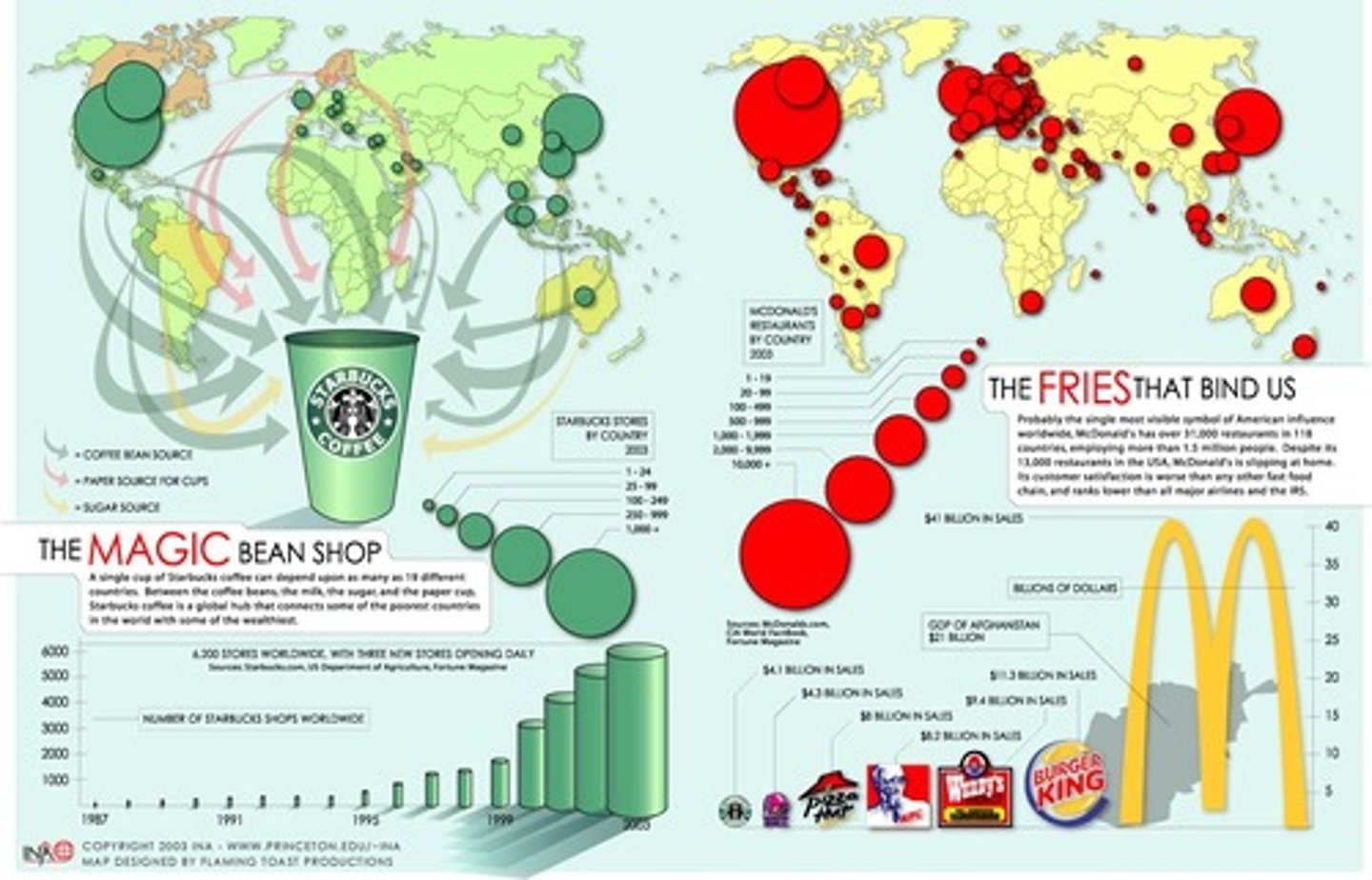
Cultural Divergence
Refers to the process where cultures become increasingly distinct from one another, often due to geographical isolation, political boundaries, or a conscious effort to preserve unique traditions. For example, the Amish community in the United States, who actively choose to maintain a distinct lifestyle and practices, including traditional clothing and limited use of modern technology, which sets them apart from the wider American culture; essentially choosing to "diverge" from the dominant cultural trends.

Language Family
Refers to a collection of languages that share a common ancestor language, meaning they are related through descent and have evolved from a single "proto-language," similar to how biological families share a common ancestor; a prominent example is the Indo-European language family, which includes English, Spanish, French, Hindi, and many more languages across Europe, Asia, and parts of the Americas.
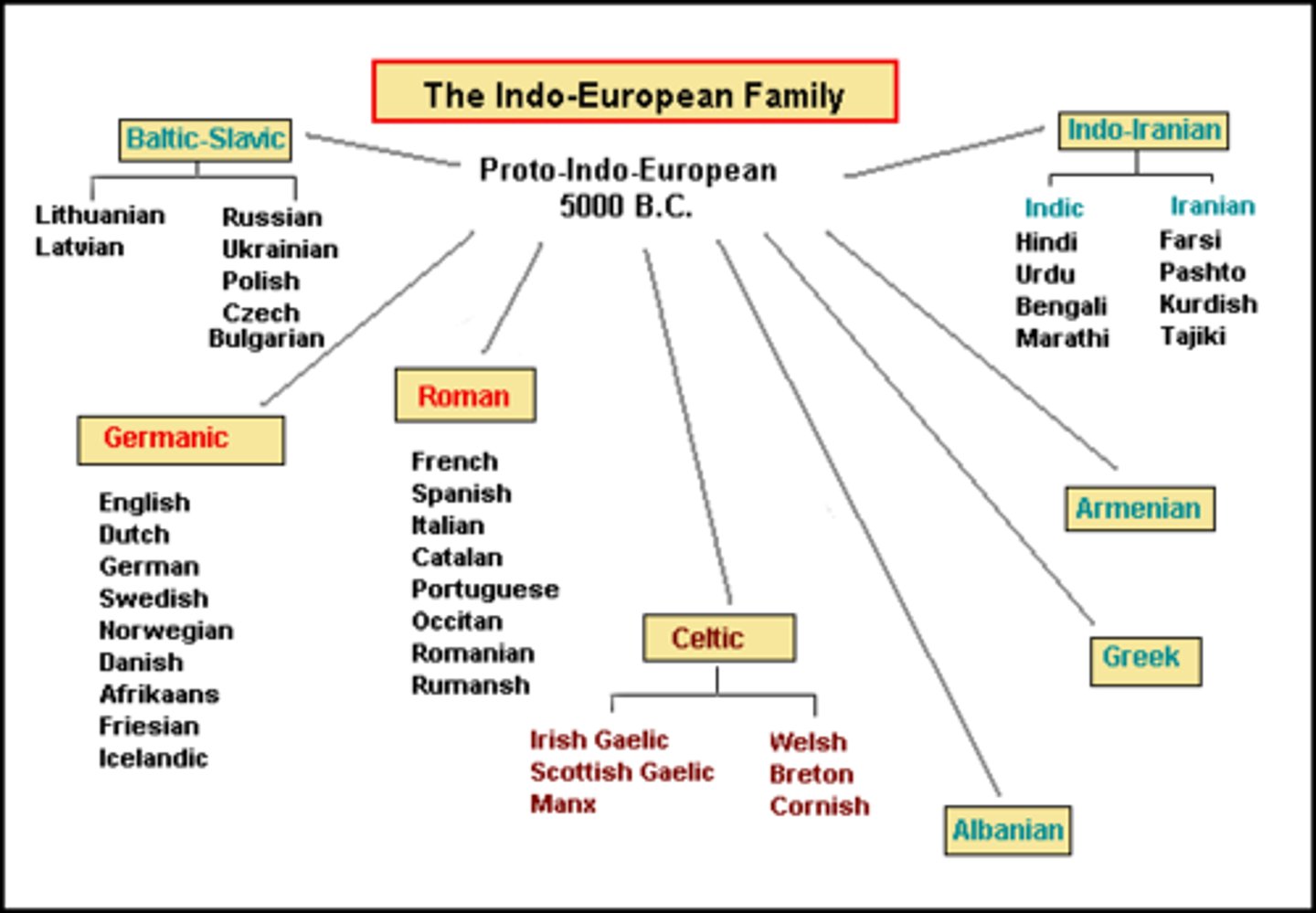
Dialect
A regional variety of a language, meaning it's a specific form of a language spoken in a particular geographic area, often characterized by unique vocabulary, pronunciation, and grammar that may differ slightly from other variations of the same language. For example, For example, people in the South are known to use words such as "y'all". An accent is a distinct pronunciation and speech of a language that does not have any grammatical changes.
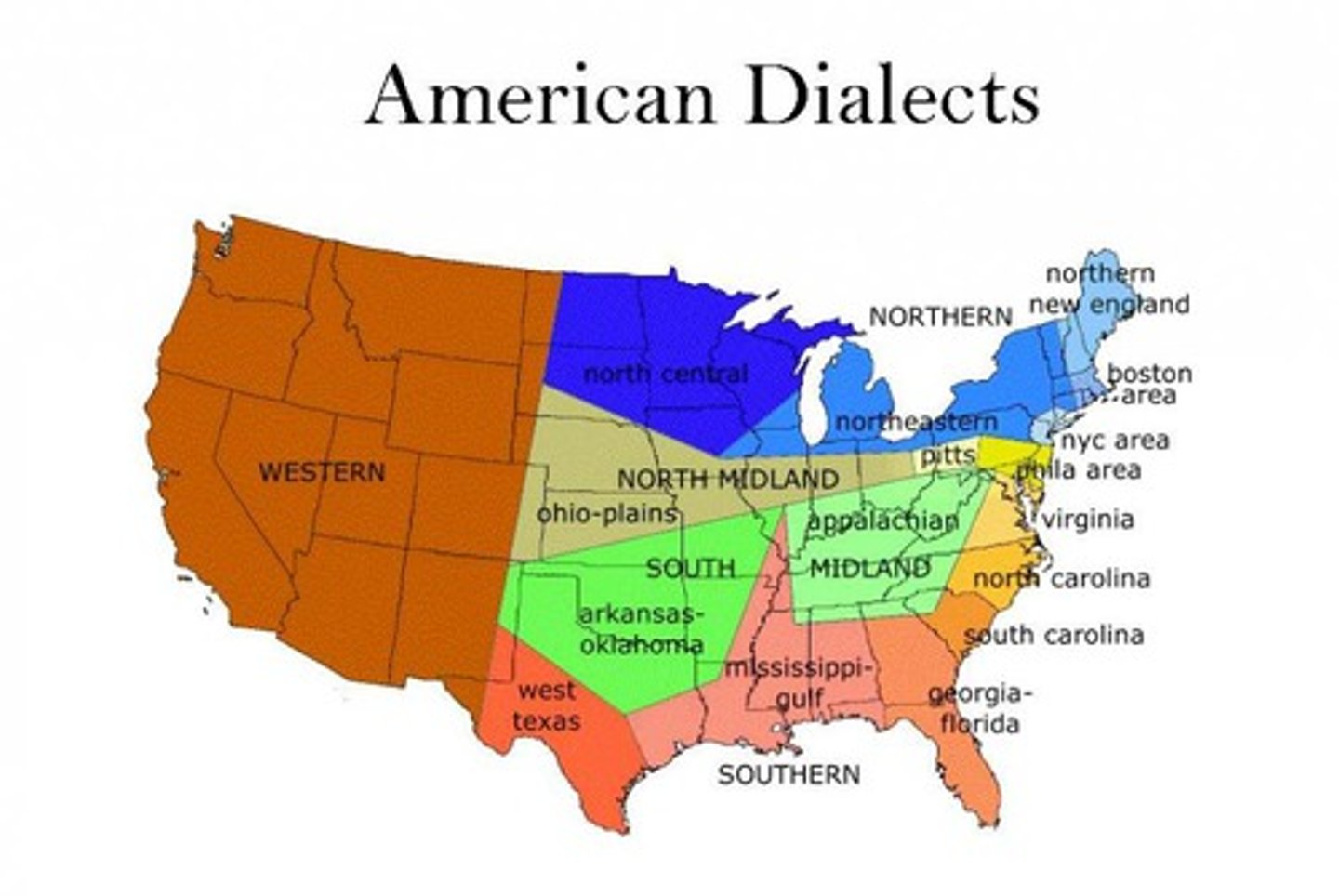
Isogloss
Refers to a geographic boundary line that marks where a particular linguistic feature, like a word pronunciation or usage, changes between different dialect regions of a language; essentially, it's a line on a map that separates areas with different linguistic characteristics within the same language. For example, "Sub" vs. "Hoagie": The line dividing areas where people call a sandwich a "sub" and where they call it a "hoagie".

Indo-European Language Family
Refers to a large group of related languages spoken across much of Europe, parts of Asia (including India and Iran), and other regions colonized by European powers, which share a common linguistic ancestor and are considered to have originated from a single proto-language, with branches including Germanic, Romance, Slavic, and Indo-Iranian languages; essentially, it is the most widely spoken language family globally, with languages like English, Spanish, French, Russian, Hindi, and Persian belonging to it.
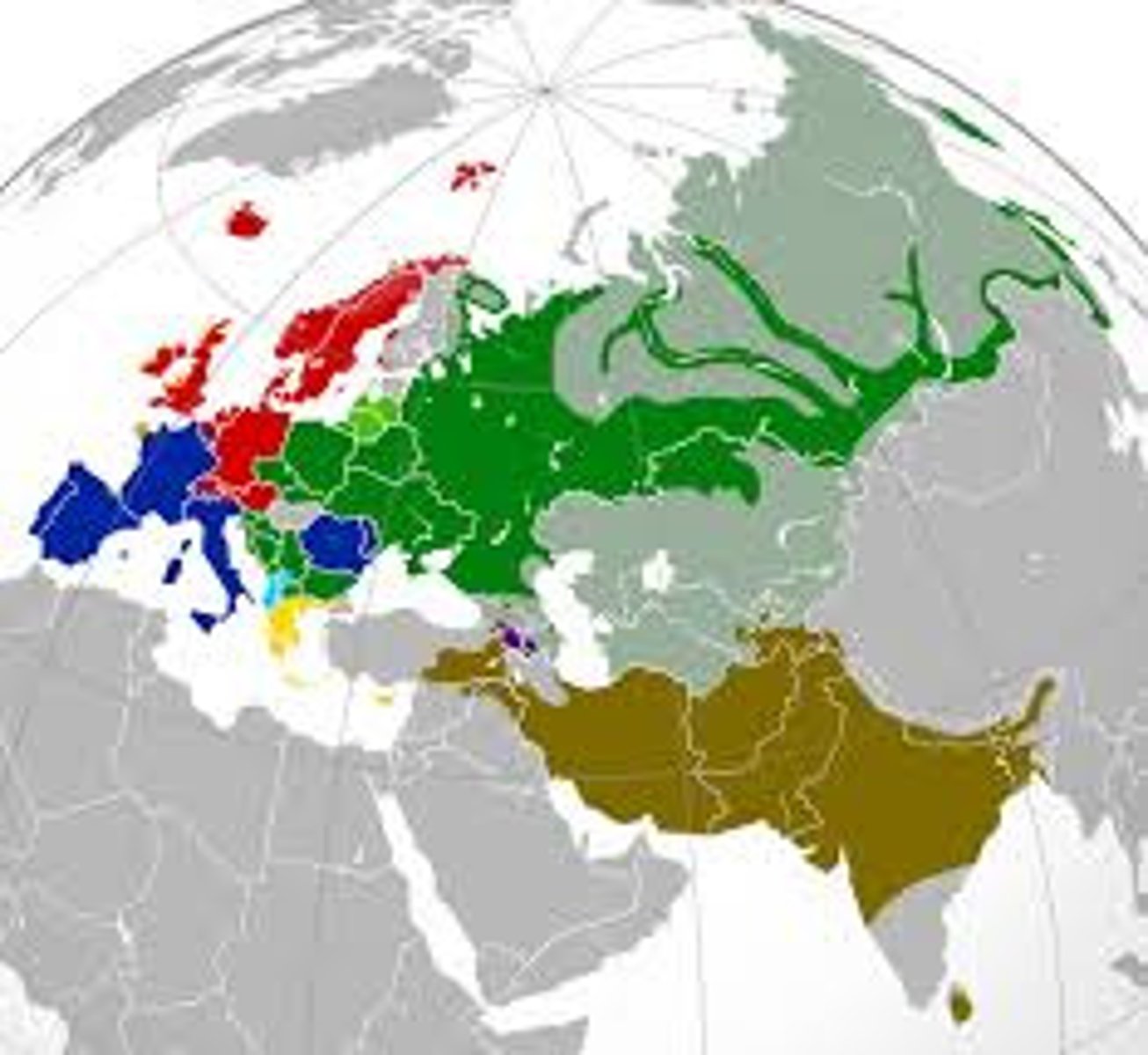
Universalizing Religion
Refers to a religion that actively seeks to attract followers from all over the world, meaning it attempts to appeal to people of diverse cultures and geographic locations, often spreading through missionary work and conversion, with examples including Christianity, Islam, and Buddhism
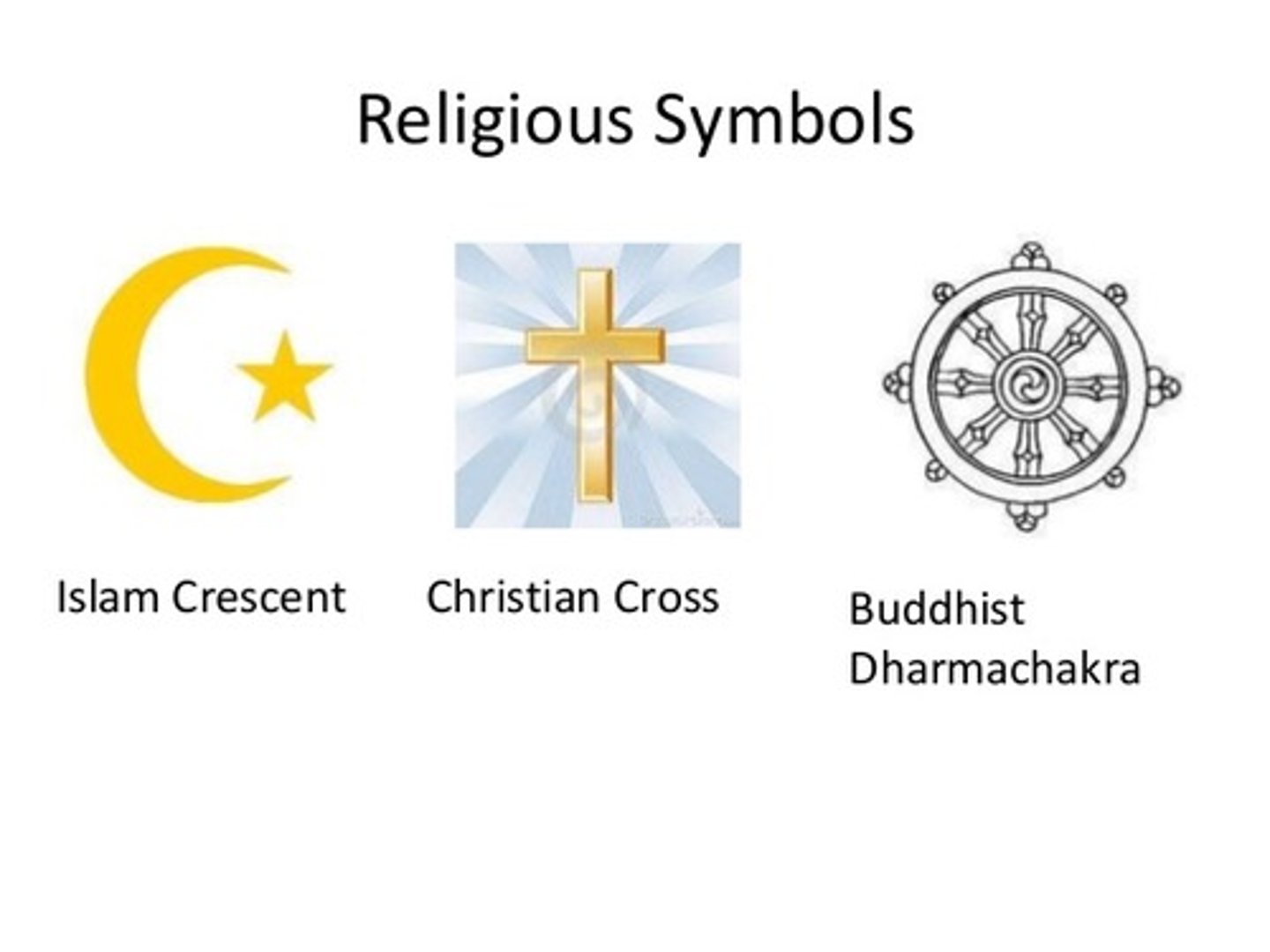
Ethnic Religion
Refers to a religious belief system that is closely tied to a specific ethnicity, culture, and geographic location, meaning it does not actively seek to convert people outside of that particular group. Judaism and Hinduism are prime examples of ethnic religions, as they are closely tied to specific ethnic groups and cultural practices.

Polytheistic
Means a belief system where people worship multiple gods, essentially referring to a religion that recognizes and venerates more than one deity. For example, while Hinduism is the most commonly cited example, other polytheistic religions include ancient Greek and Roman pantheons, Shintoism (from Japan), and many traditional African religions.

Monotheistic
The belief in one god or divine being. For example, monotheism is a characteristic of Judaism, Christianity, and Islam, which all originated from a common source. Judaism:
The world's oldest monotheistic religion, which emerged about one thousand years before the birth of Christ. Judaism is the progenitor of Christianity and Islam. Christianity: Began around two thousand years ago and is the most widespread religion on Earth. Islam: Began in the early seventh century with the life of the Prophet Muhammad. Islam has many branches, with the two largest being Sunni and Shi'a.
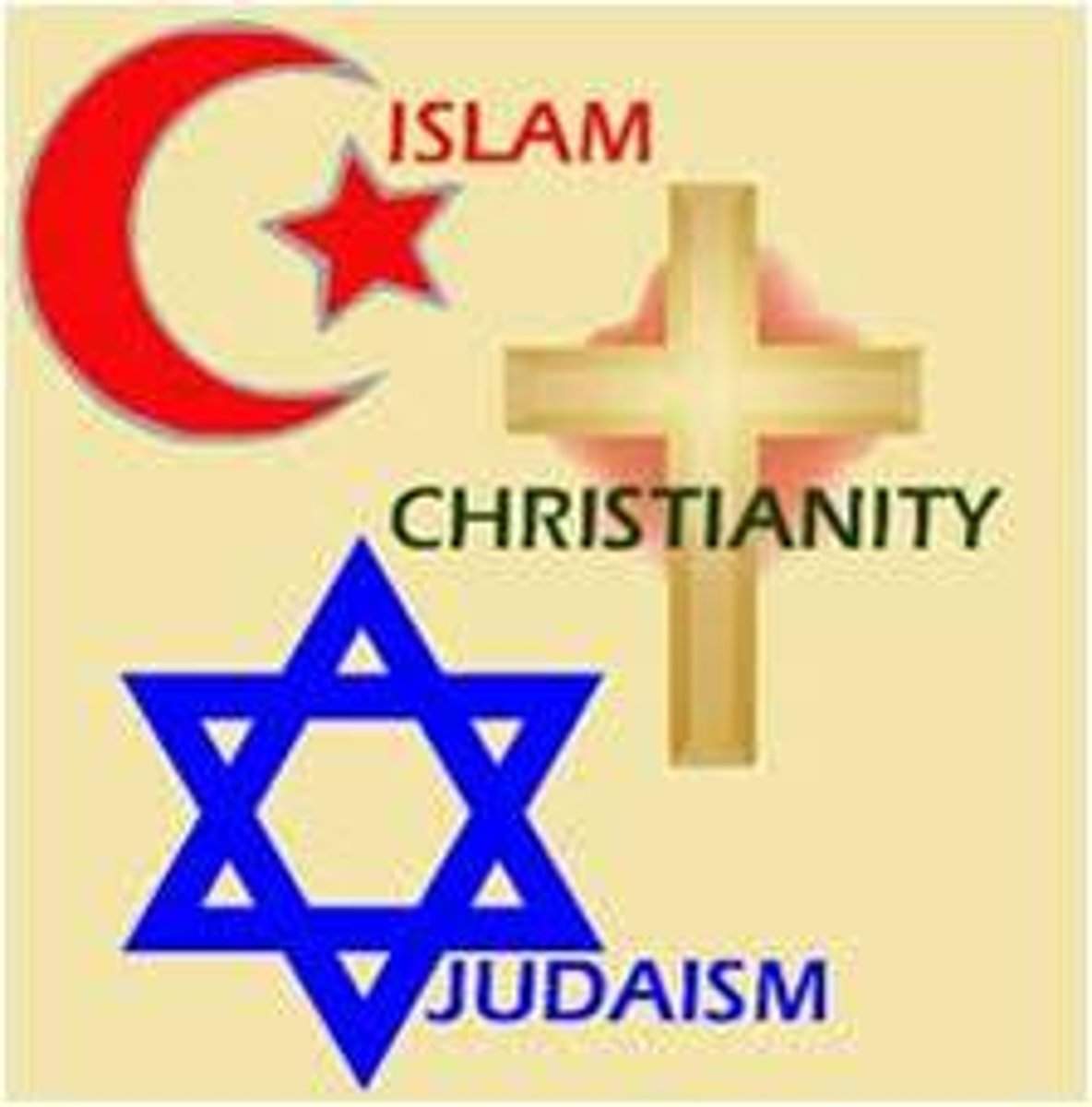
Cultural Appropriation
Refers to when members of a dominant culture adopt elements of a minority culture in a disrespectful or exploitative manner, often without understanding the original cultural context, essentially taking aspects of another culture for their own benefit, usually without acknowledging the source culture and potentially causing harm to it. For example, the use of Native-American tribal names in American sports (Redskins, Blackhawks, Braves, and so on) is an example of cultural appropriation.
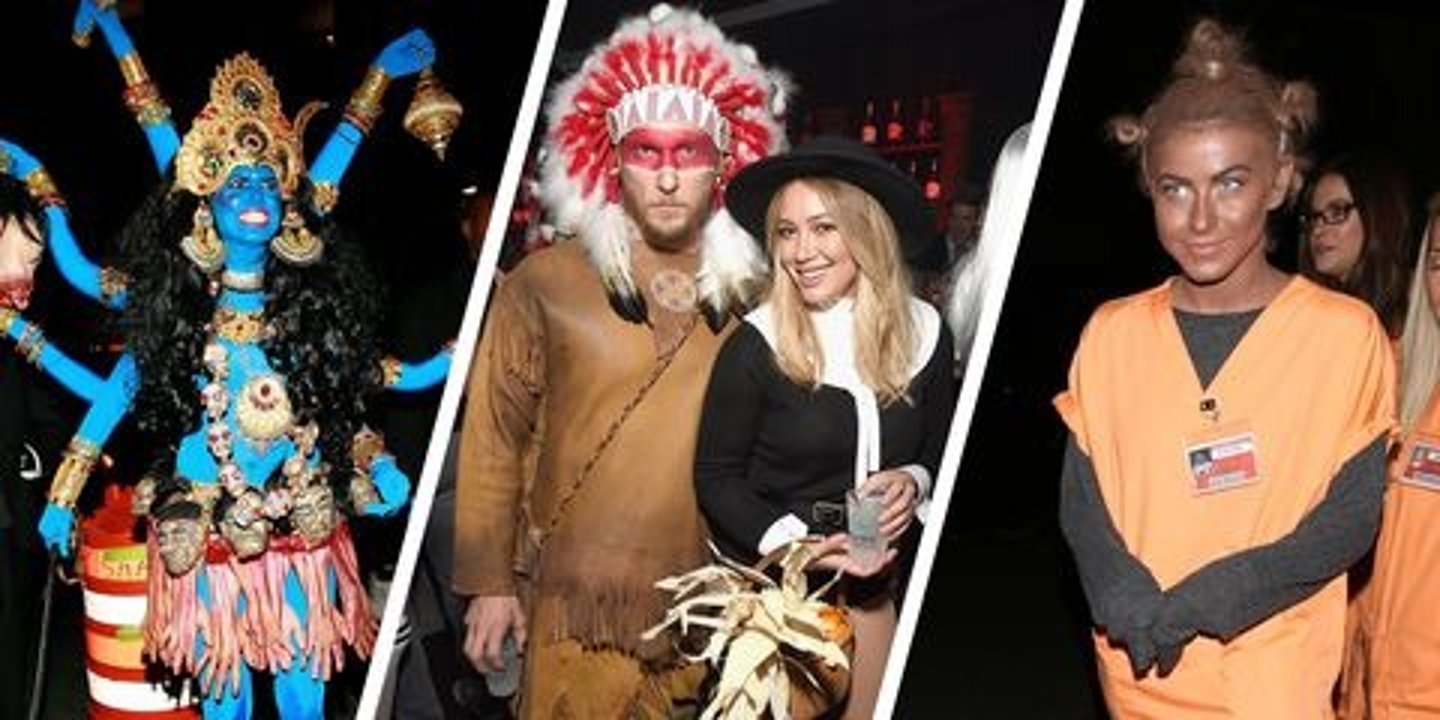
Acculturation
Refers to the process where a group of people adopts certain cultural traits from another culture, usually while still maintaining aspects of their own original culture, often happening when a minority group interacts with a dominant culture and adopts some of its customs and practices; essentially, it's the process of adapting to a new culture while retaining elements of one's own culture. For example, a Mexican family in the US speaking English in public but still cooking traditional meals at home.
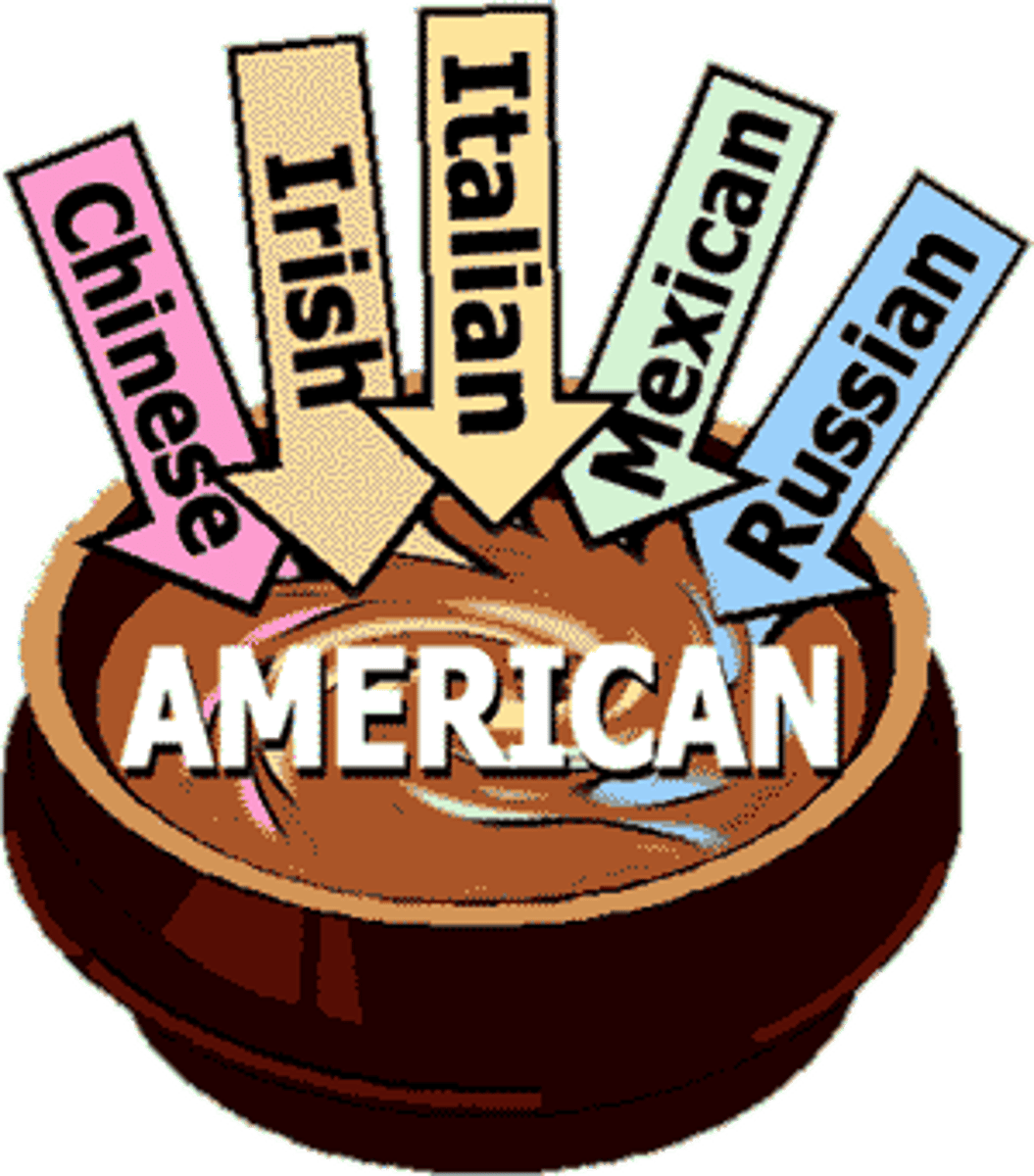
Assimilation
Refers to the process where a minority group adopts the cultural traits of a dominant group, essentially becoming fully integrated into the majority culture, often losing aspects of their original heritage in the process; it signifies the complete absorption of a minority group into a dominant society, including their customs, language, and values. For example, a Mexican immigrant primarily speaking English and celebrating American holidays instead of traditional Mexican ones. Historically, assimilation has often been forced upon minority groups, like the policies implemented to assimilate Native Americans into mainstream American society.
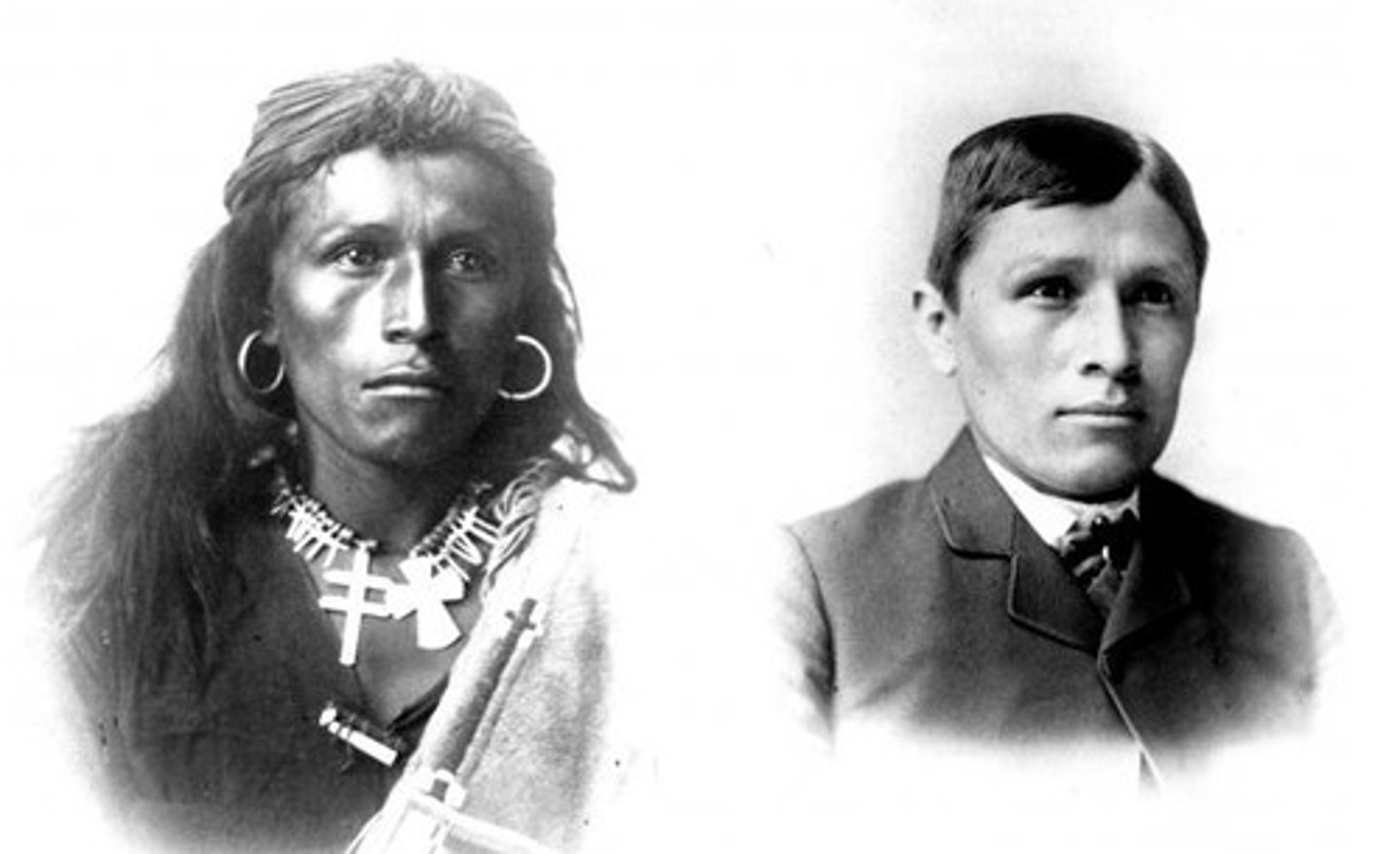
Syncretism
Refers to the blending or merging of cultural elements from different societies, creating a new cultural practice that incorporates aspects of both, often seen in the mixing of religious beliefs and traditions when cultures interact with one another; essentially, it means the combination of different cultural traits to form a new, unique cultural expression. For example, Santeria in Cuba: A mix of Catholic beliefs with West African Yoruba traditions. Voodoo in Haiti: Blending of African spiritual practices with elements of Catholicism.
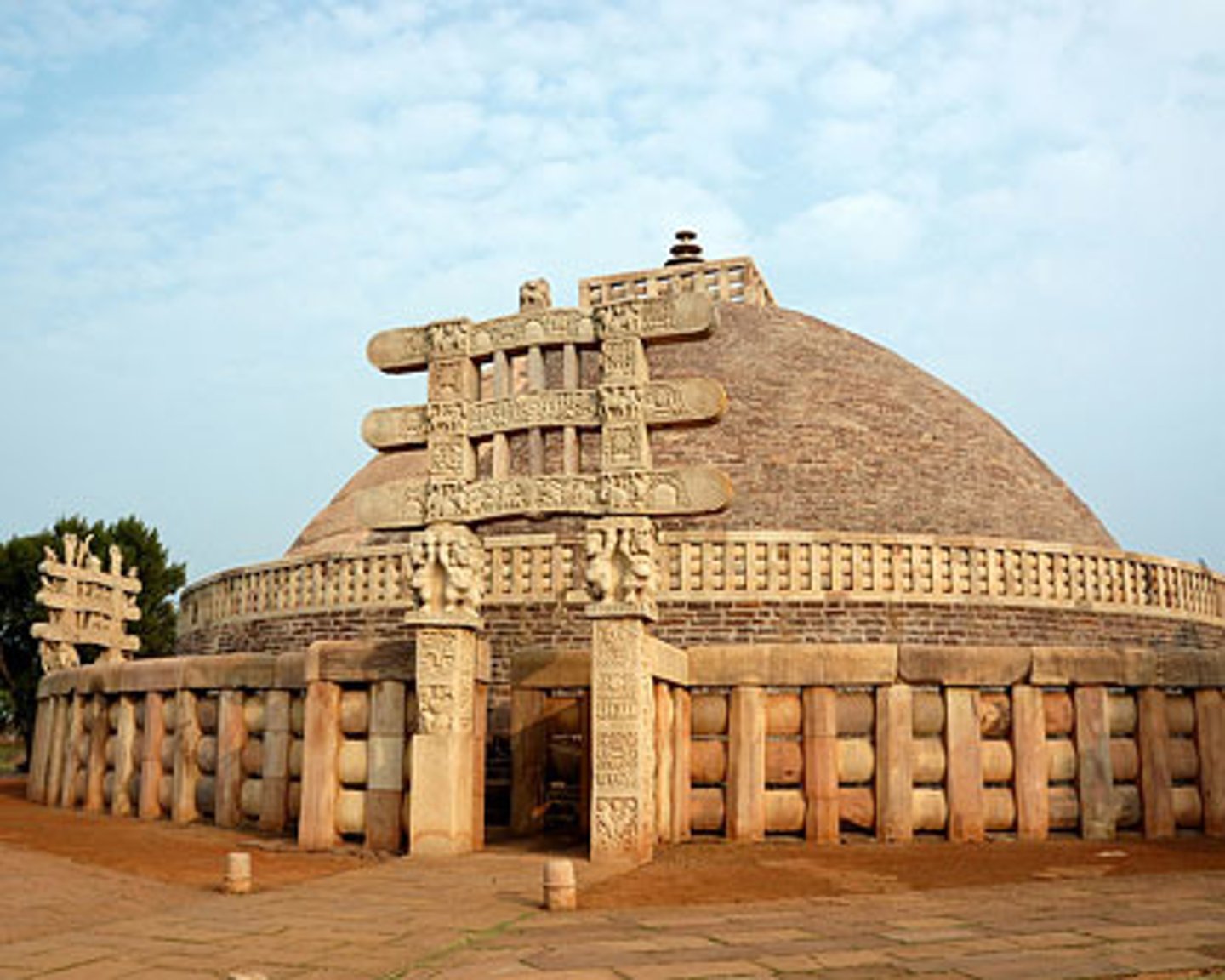
Multiculturalism
Refers to the acceptance and promotion of multiple cultures within a society, where different ethnicities, languages, and traditions coexist and are valued, allowing individuals to maintain their unique cultural identities while participating in the broader community; essentially, it's the idea of a society embracing diverse cultural backgrounds without forcing assimilation into a single dominant culture. For example, in Canada, which has both French and English speaking populations, and some European countries that have multiple official languages and different ethnic groups throughout the country.
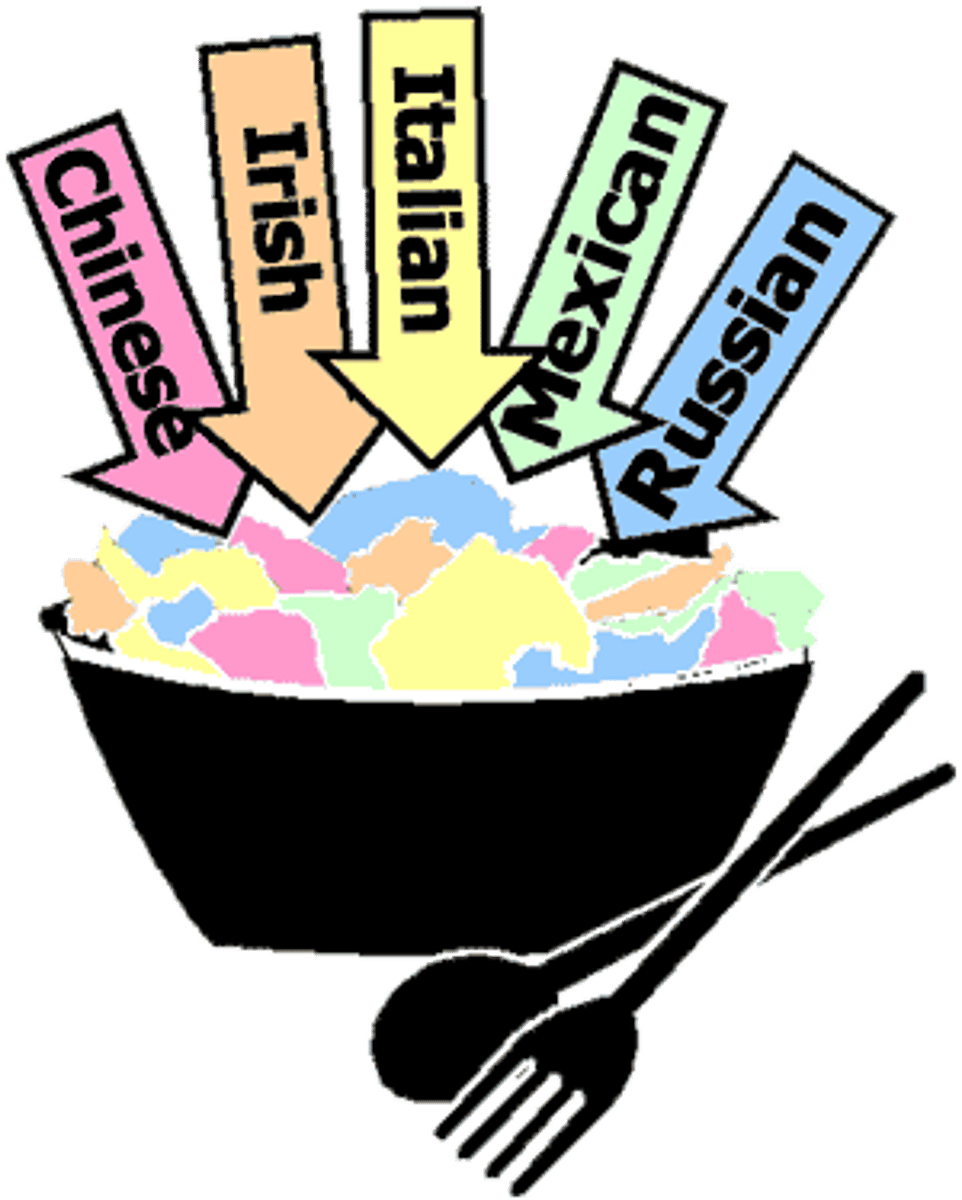
Nativism
Refers to a political ideology or social attitude that prioritizes the interests of native-born citizens over immigrants, often leading to policies that restrict immigration or discriminate against newcomers based on their origin or ethnicity; essentially, favoring the "native" population over newcomers. For example, he "Chinese Exclusion Act of 1882", which restricted Chinese immigration to the United States, demonstrating a policy favoring native-born citizens over immigrants and reflecting strong anti-immigrant sentiment towards Chinese laborers.
